Ultimate Diesel Buyer's Guide
Today’s diesel engines are efficient and powerful. But can you offer what it needs? This is your definitive dummy’s guide to buying, owning and maintaining a new modern diesel…
The diesel engine has become much more than a lump of smokey, agricultural pig-iron designed to move resources, earth, or simply plough over it.
In many respects, it’s the superior powertrain when it comes to moving you and your family in a smooth and refined manner with plenty of power to perform both work and holiday duties.
But how do you know you’re getting a good diesel engine, and what should you be wary of before dropping your hard-earned cash?
Diesel engines have become a premium option, offering more grunt, increased thermal efficiency and greater fuel economy than their petrol equivalents. But despite diesel technology’s improvements, and many brands trying very hard (seemingly) to trash its reputation, the diesel engine still has many benefits to offer.
Additionally, diesels for some brands are on the way out, being displaced for hybrids in many cases. But is this better for you? Some brands don’t think so and have refused to let the benefits of diesel be lost to the hybrid craze.
The fact is diesel is the second most popular powertrain in Australia. In 2023, diesels made up over 30 per cent of new vehicle sales-by-registration, to the tune of nearly 38,000 units. Diesel-powered vehicles made up half of the top 10 most popular models, including Ranger, Hilux, D-Max, LandCruiser and (to a lesser extent) Hyundai Tucson. And diesel sales are increasing, overall.
If you want to understand the anatomy of a modern diesel, what’s on offer in the Australian market today, and what your ownership experience will probably be like, this is your technical and in-depth guide to getting a good one - and keeping it sweet for years to come.
If you’re in the market for a hard-working dual-cab ute, a large seven-seat SUV or a 4X4 off-road wagon, you should make it your goal to understand the nuances of the modern diesel engine.
Doing this will keep you out of the service department prematurely, and happily driving your family to and from the compulsory social events your kids and spouse have meticulously planned for you over the next five years. The ones you can’t get out of.
CONTENTS
Looking for specific information about diesel engine vehicles? Click on these links below to skip ahead.
Capacity: Does size matter?
Exhaust Gas Recirculation (EGR)
DIESEL SALES
Despite all the commercial, media and government hype about electric vehicles and hybrids, the cold hard fact is this: diesel sales are increasing in Australia. And knowing what the diesel market is doing is good for your future resale prospects, lest the market collapses and you’re left with the diesel equivalent of a Holden or a Tesla.
Fortunately, that’s not the case for diesels.
This is in spite of the number of carmakers steering their products away from offering a diesel powertrain, including some of the most popular models in their respective segment, such as Hyundai Santa Fe and Kia Sorento, Kia Carnival, Toyota RAV4, Mitsubishi Outlander, Mazda CX-5 and CX-8, and Ford Escape - all of which once sold in fairly decent numbers.
Hyundai Australia even acknowledged that roughly 80 per cent of Santa Fe sales between 2021 and 2023 were diesels (over a petrol V6 alternative).
So exactly how good are diesel sales in 2024? They’re booming, thanks largely to the popularity of dual-cab utes. As of mid-2024, according to VFACTS sales data from the FCAI, diesel sales are up 9.5 per cent.
Australian diesel sales 2019-2023
Dual-cab utes are among the most popular vehicles in Australia - and all 208,700 of them are diesels. All of the 20,000+ medium vans sold in 2023 were diesel. And of course, all of the 51,772 light, medium and heavy duty trucks sold in 2023 were diesel.
The best-selling passenger diesels are utes and off-road 4X4 wagons like the Ford Ranger, Toyota Hilux and Isuzu D-Max, and the Toyota LandCruiser and Prado, Ford Everest, Isuzu MU-X, Mitsubishi Pajero Sport, as well as medium SUVs like Kia Sportage and Hyundai Tucson (until changing to hybrid in 2024).
Sales of 4X4 Ranger in 2023 were up 35 per cent compared with 2022, while Hilux sales were 3.5 per cent higher than 2022, Mazda BT-50 total sales were 33 per cent up on 2022, and Isuzu D-Max managed a 20 per cent increase for 2023 over the previous year.
LandCruiser 300 sales finished up 14 per cent higher than 2022, as did Everest achieve a 46 per cent sales eclipse, while MU-X managed a 28 per cent gain, and Hyundai Santa Fe (which sold 80 per cent diesels in 2023) finished with a 31 per cent sales improvement over 2022; it’s dizygotic twin the Kia Sorento was 8 per cent up in 2023.



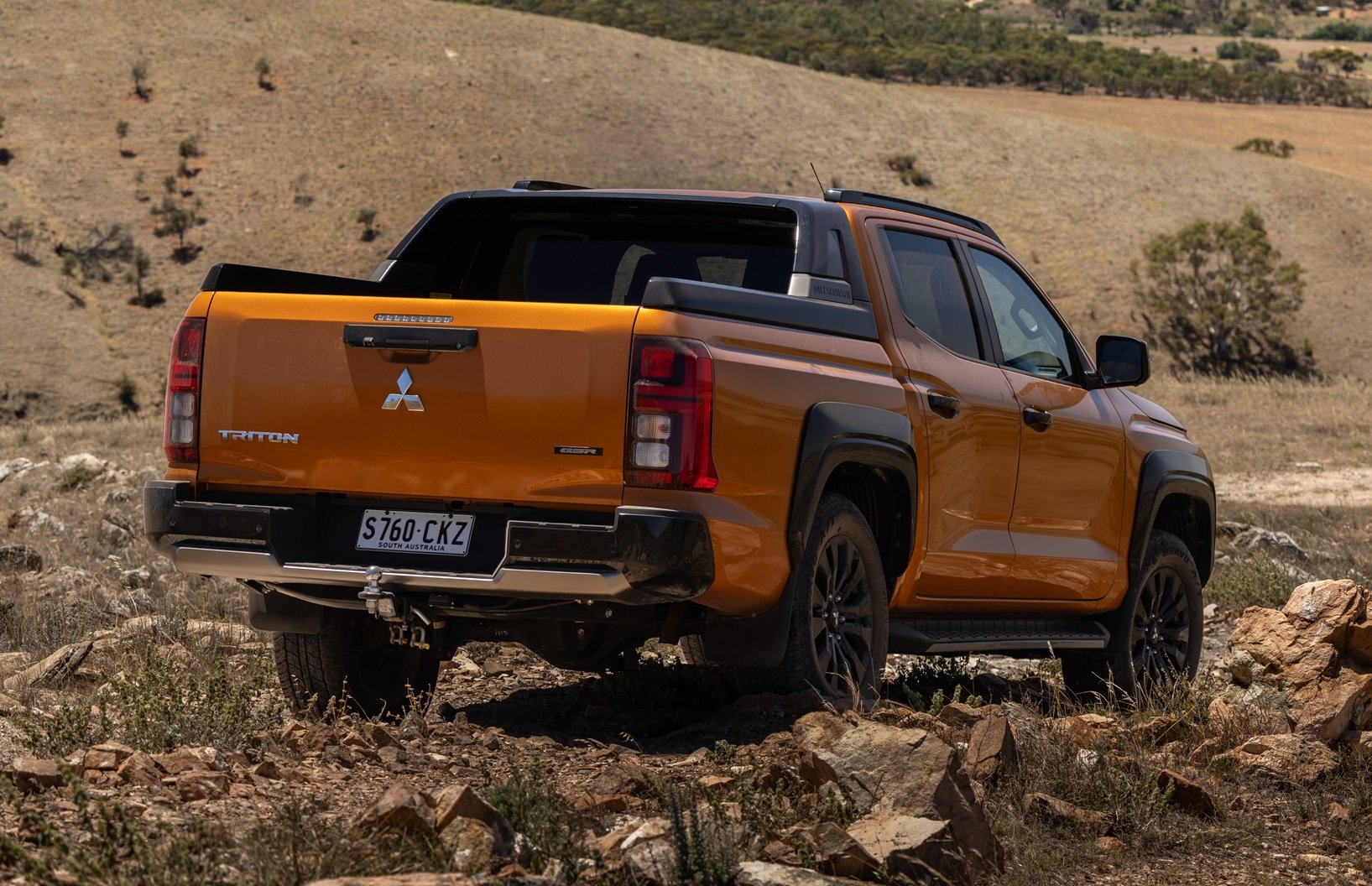
But unfortunately, your options for having a diesel-powered vehicle are becoming increasingly limited. It has become almost impossible to find a diesel medium SUV, save for the Kia Sportage, or a diesel people mover, save for the Kia Carnival - but even these are going to be hybrid soon. Small SUVs, cars and hatchbacks are all petrol now, many of them now come with hybrid alternatives, and only Mazda is bringing out a line of hybrid diesels - the CX-60, -70, -80 and CX-90 - which are aimed at a luxury consumer anyway. For now, that is.
Why are diesels being corralled into either 4X4 utes or large, luxury/wagon SUVs only? Times, they are a-changing, just as diesel technology is at its cleanest and most efficient.
.
EFFICIENCY
Physics says the term efficiency means:
the relationship between the amount of energy put into a machine or process, and the amount of useful work that it produces
Diesels are more efficient than petrol, by a decent margin - in some cases by up to 30 per cent, approximately. This is due to the inherently greater energy density of diesel fuel. The same volume of diesel will produce more energy, when combusted, than petrol/gasoline - even the premium 98 RON stuff.
So it would make sense that with all these brands taking their models hybrid, that they would use diesel as the preferred fuel to hybridise. Wouldn’t it? Well, they’re not. It’s gasoline. Why? Because: North America loves gasoline. But also, because their tax system taxes diesel more than petrol. Whereas in Australia, it’s about the same.
The compression is higher in modern diesels, allowing the expansion to take place over a greater range, which delivers a huge boost in thermal efficiency. Meaning: More power at low revs and with less CO2 for any given driving. Some carmakers don’t want you to think about this because they want you to buy their fancy new hybrids, their ‘mild’ hybrids, or their electric vehicles.
If you remember back about 10 years, small diesel hatchbacks were still available, such as Volkswagen Golf and Hyundai i30, as were some diesel medium sedans and SUVs such as the Mazda 6, Subaru Forester, and until more recently the Hyundai Tucson.
For years these were marketed as the most economical vehicle choices you could make when purchasing a new car. Sure, you paid a price premium for the diesel engine, but that’s because you received a direct fuel-efficiency benefit from having that engine. Some carmaker advertising quoted close to 1000km on a single tank in the same way carmakers switched to tell you about how far their EVs would take you on a single charge.
Only the diesel engine was unfairly demonised as a result of the backlash against Volkswagen for its emissions cheating post-2015. But imagine being able to get 800km of driving range from a 40-litre fuel tank? These days, a 54-litre tank in a Kia Sportage will get you that kind of range, but it costs about $37,400. That’s $11,000 more than an i30 ‘Active’ diesel in 2018 with a combined fuel economy figure of just 4.7 litre per 100km (34 per cent less than the Sportage).
And if you think a Toyota Corolla hybrid is the poster boy for efficiency, an Ascent Sport hybrid (the base model) is $36,000 driveaway in 2024, and quotes almost the same combined fuel economy figure, 4.2L/100km, as a 2018 Hyundai i30 diesel which was 10K cheaper.




Diesel powertrain choices have been killed off on popular SUV models including the Mitsubishi Outlander, the Toyota RAV4, Tucson and (soon) Sportage, the Subaru Outback and Forester, the Mazda CX-5 up until 2023 and even the CX-9’s non-identical twin, the CX-8 which was almost exclusively diesel with all-wheel drive, was dropped at the end of 2023.
You’re here because you’re considering buying a diesel vehicle, or you have recently bought one, or perhaps you just want to know more about how your diesel works. So let’s look at diesel engine capacity and how it makes that desirably smooth low-end grunt for towing, carrying and off-road driving.
It’s common for consumers to wonder if a bigger capacity diesel engine will mean more grunt than a smaller-capacity engine. But this is somewhat flawed thinking.
Whatever job the engine is doing - climbing a hill at 80, cruising on the flat at 100, taking off from the lights - the powertrain is overcoming a fixed set of resistances and generally, much less than its peak outputs are being demanded of it.
Engines in vehicles are rarely called upon to do all they can. Especially so in diesels - how often do you actually see a diesel engine being redlined? But what you’re thinking here is not absurd; smaller engines seem to do more with less. That’s a logical way of thinking about it because they seem to work proportionally harder.
As an example, a 3-litre V6 Ranger towing 3 tonnes seems to be doing the same amount of work with more cylinder capacity than a Triton pulling the same 3 tonnes with just 2.4 litres of capacity from its bi-turbo 4-cylinder engine. No doubt, the Triton is doing whatever work with less engine capacity, for any given set of loads.
When you look at the peak power figures, BT-50 is making 46 kilowatts for every litre of displacement. Triton is making 62. So the specific power output of Triton is about 34 per cent higher. Navara 2.3 is about 61 kilowatts per litre - that’s 32 per cent above BT. Ranger 3.0 V6 diesel makes 184kW, divided by number of cylinders, is roughly 30kW per cylinder - almost identical to Navara in specific power output (slightly higher) but is less than the BT-50. And we all know the Ranger is a grunt factory compared with the rest of these utes.
But when you look at a Hyundai Santa Fe or Kia Sorento 2.2 diesel, at around 76 kilowatts per litre, that’s 65 per cent higher than the BT-50. And the 2.0-litre HMG turbo-diesel in Sportage and Tucson is roughly the same as Triton and Amarok V6.
The point being: none of these engines - which have all been deployed in the market for such a long time - none of them have developed a reputation for early catastrophic failure, or premature wear, stemming from being too pumped up.
These kinds of failures in small diesel engines are rare. Statistically, it does not happen. What’s more common is ‘weak link’ type failures that have nothing to do with power production - and I’m talking in general here, across the entire ute and SUV market.
Here’s an example: a dodgy EGR valve might dump all the coolant out the exhaust pipe and then fry and seize the engine, or a high-pressure fuel pump might pack up and destroy the injection system. In a Toyota LandCruiser, the air filter might fail and dust might destroy the engine. Or a DPF system may catastrophically shit itself. These failures have nothing to do with power production. They’re far more prolific.
There’s nothing outrageous - engineering, applied-science outrageous - about how tightly any of these engines is wound up. They’re all pretty conservative. I certainly understand the logic behind the nude, bilateral beard-stroking ‘more is less’ hypothesis. It seems plausible. It just also happens to be bullshit.
Because you test hypotheses by experiment, and this experiment has been running - out there on our roads - for years. These engines simply don’t fail because they’re excessively cranked up for their size. They just don’t.
Transmissions, on the other hand, they can fail during heavy towing.
Engine durability has far more to do with how well the engineers in R&D identify premature failure modes - and whether the budget will tolerate the remedy that’s required.
Like, if you know (as an engineer in the skunkworks) that you really should re-engineer that EGR valve, or that air filter, to increase its reliability, you need beancounter approval to spend the big bucks. And sometimes they give you the ‘sex and travel’ response.
These engines do not fail because they can’t handle making enough power to tow your caravan. In fact, transmissions and driveline components generally tend to be weaker links on this.
There’s a thing engineers use called 'Brake Mean Effective Pressure' or BMEP. It's a theoretical concept that's meant to represent the average pressure operating on the pistons during peak power output. It's a means of assessing efficiency: higher numbers mean the engineers did a better job.
An engine benefits from having more hi-tech componentry where it might have variable valve timing and lift, for example., and produces a bit more pressure than an engine that doesn’t.
The Mitsubishi Triton compared with the old Ford Ranger used to have this discrepancy. The Triton’s engine was working harder producing 15.8 kilowatts per litre per 1000 revs, versus 15.3 in the Ranger 3.2 V6, which was a difference of about three per cent. So: not that much of a difference, when you think about it.
Another way of looking at this is that the Ford engine made 29.4kW in each cylinder at its peak power output. The Triton's engine was making 33.3 kW per cylinder. So, each cylinder was working about 13 per cent harder. It was also spinning about 17 per cent faster while doing that.
Today, with its bi-turbo 2.4-litre 4-cylinder diesel, Triton makes 2418 kilopascals of pressure at peak power. The big 3-litre turbocharged V6 Ford Ranger makes 2519 kilopascals - just 4 per cent more efficient.


However, consider that this is a big jump from ‘close on efficiency’ to 'it'll wear out faster'. This depends on many other factors including the calibre of materials used and the underlying R&D. This kind of thing can make more difference to an engine's longevity than simply an analysis of the peak power outputs and the displacements.
There have been cases - plenty of them - where under-done R&D resulted in premature major component failure. If a big-end bearing or a timing chain fails prematurely (for example) the engine is generally a throwaway, regardless of how the wear rates of the rings or valve guides are going.
On ‘this capacity’ versus ‘that capacity’, if a one-litre engine were screwed up so tight is made the same power output as a three-litre engine, then it would be fair to assume it would wear out faster - but only because there are physical limits that often mean wear rates are non-linear. The fact is, however, that today’s current Ranger and Triton model engines are very similar.
Diesel engines can't really be revved much beyond 4000rpm, either - it's a physical limitation - and wear rates are closely related to the operating speed of the parts. (Diesels don't rev higher because they can't: it's a problem relating to the combustion duration, the combustion dynamics, the fuel delivery and injection process and the heavier mass of the reciprocating parts.)
What really kills diesel engines is:
Short Trips:
What's far more likely to determine which engine will wear out first, in the real world, is the way you use it.
Short trips with lots of cold starts (per distance driven) wear engines out quickly. (When the metals are cold the working parts don't fit together very well, and the lubricating oil isn't exactly doing its finest work either - and this greatly accelerates the wear rate.) Lots of cold starts equals accelerated wear - every time. Engines that turn on and do dozens - or even hundreds - of kilometres between cold starts last for many more kilometres that their stop-start cousins in the city.
and; Owner Abuse
If you thrash your engine, it wears out faster. But an even more insidious form of abuse is the failure to service the vehicle.
Lubricating oil has a use-by date and a use-by distance beyond which it fails to form the required tough, thin film that separates the moving metal parts. And, when that occurs, wear rates skyrocket. It's a false economy not to service your car at least by the required time or distance - whichever occurs first.
.
HOW DIESEL ENGINES WORK
OPERATING SPEED
If you think about a diesel engine at say 3000rpm. That’s 50 revolutions per second. Fifty! Two revs per cycle - each cycle comprising suck, squeeze, bang, blow. Like pornography, only hotter and a lot faster. The whole cycle takes one-25th of a second. 40 milliseconds. That’s for all four parts - sucking, squeezing, banging and blowing. (Redefines the term ‘quickie’.)
Also known as 'inlet', 'compression', 'ignition' and 'exhaust' respectively.
IGNITION TIMING
Let’s slow it all down. The window in time where all the valves close and the piston is on the way up. The squeeze is on. Compression. Piston gets near the top. It’s hot. It’s tight. It's ready to go off.
The fuel has a window of opportunity that is very brief - just a few milliseconds. You spray it in, it autoignites. Boom. Has to be exactly right.
.
INJECTION EVENTS
Except it’s not just one little spurt of fuel. It’s as many as five - two little spurts up front, a big one in the middle, and two little follow-throughs. The first two take out the mechanical knocking sound, main spurt delivers the bulk of mechanical work, and the latter spurts help clean up the emissions. A high-speed Caligula-esque orgy of spurting precision. 100 times a second, on a four-cylinder engine at 3000 rpm.
These injector events have very precise delivery schedules and volumes. And the windows of opportunity are millisecond-critical. It’s a beautifully synchronised ballet - like Swan Lake on crack - and it adapts in real time to all kinds of external influences - load, throttle position, speed changes, auto gearshifts - it’s friggin’ precise and a brain bender of complexity.
PIEZOELECTRIC INJECTORS
Injectors have these tiny holes - five to 20 holes per injector; about 150 microns each in diameter. And they open and shut manically and precisely thanks to the miracle of piezoelectric control. To make them work, you need a reservoir of fuel at super-high pressure. Literally busting at the seams to get in there.
You can think of the injector as a floodgate and the fuel rail as a dam with a pressure on the bottom of the dam wall at 2000 atmospheres. Or 200 megapascals. If you want to build a dam like that, with pressures like that, out here, the wall would have to be 20 kilometres high. (Like it would be if you were able to dive 20 kilometres deep into the ocean.)
So good luck with that.
The pressure in a direct injection fuel rail is magic - which is a good name for technology generally if you don’t understand how it works.
.
BUYING THE RIGHT DIESEL VEHICLE
Purchasing a diesel vehicle is relatively easy enough, but finding the right one is a more nuanced.
The best place to start is asking yourself a bunch of questions, with truly honest answers, regarding exactly how you intend to use the vehicle, in order to figure out what it needs to do for you.
If you have a big family, consider a large SUV or, if you’ve had multiple-births or your kids are about the become teenagers, consider a people mover for legroom, headroom and luggage loadspace. Sorento or Carnival are supreme options.
Perhaps you need a dual-cab ute that will double as the work truck during the week and will see plenty of regional touring holidays, possibly with some towing, but you need it to be as comfortable and luxurious on the inside as possible for your dearly beloved. If it needs to do everything, Triton, Ranger or BT-50 are going to be your best choices.
If you’re going to drive long distances to run a small or medium business to visit clients, or perhaps to see relatives, a medium SUV like Sportage diesel will eat up those kilometres with ease, but can also happily slot back into regular weekly running-around: shopping, school drop-off, morning commuting.
So when it comes to choosing the right diesel engine, if you want efficiency - the most work done for the least amount of energy input (fuel burned) - depending on the task, you’re inevitably going to find yourself comparing engines and models.
But remember to find the right type of vehicle first, and then compare those similar models based on how you need them to perform.
For example: you might want a Troopy, but a Prado might be the more suitable vehicle based on fuel economy, comfort and capability - a Troopy might be the king off-road, but are you going to spend 80 per cent of its life off-road, or will a cheaper, more frugal Prado do all the same tasks for less cost?
Try to separate the fantasy of your automotive dreams from the reality of what it might cost.
Hyundai-Kia 2.2-litre diesel: Carnival, Sorento, Tasman, Staria
Available in the Kia Sorento 7-seat SUV, the Kia Carnival and Hyundai Staria people movers, the Hyundai Palisade full-size 8-seater, and soon to be powering the Kia Tasman dual-cab ute, the 2.2L makes 148kW peak power at 3800rpm and 440Nm from 1750-2750RPM.
Sorento GT-Line offers this engine with a power-to-weight ratio of 77.6 - not as much outright as the petrol-only Toyota Kluger, but it has to rev to 6000 rpm to reach peak power.
This is one of the best diesels on the market right now. It makes more power than the new Isuzu MU-x (albeit 200 revs higher), but importantly, it’s also impressively light thanks to an aluminium block. Delivers hybrid-like fuel economy - 6.1 litres per 100km on the official combined cycle lab test, and 5.3 on the highway.
Coupled to the slick eight-speed dual-clutch where, slowly accelerating from standstill, I can’t actually pick the point at which the automated clutch engages, it’s a great powertrain with great reliability.
A diesel Santa Fe is not longer available now that the all-new hybrid Santa Fe has arrived. But the facelifted Sorento retains the diesel engine for the next couple of years before it is fully replaced by the new SF platform (because Santa Fe and Sorento share the same fundamental design).
If you absolutely need a seven-seat large SUV, then it probably ought to be a diesel due to its superior fuel economy and load lugging performance due to the nature of diesel offering more power per litre than petrol - which is ideal when you have teenagers and sports equipment to move.
Both Sorento and Carnival have respectable light to (occasional) medium duty towing capacity, backed up by the reliable, grunty 140kW 2.2-litre diesel engine and the robust, smooth 8-speed dual-clutch transmission (torture tested here >>) which is quite capable of reversing a trailer uphill >>. Carnival gets a conventional 8-speed epicyclic auto.
You also get a full-size spare wheel and tyre package on every model grade of Sorento and Palisade which is excellent for regional holiday travel, backed up by a very clever and active all-wheel drive system that is always paying attention, so there’s that. If you can’t get a Sorento or Santa Fe, consider an Elite version of Palisade if you’re in a bind.
Don’t miss out on nabbing yourself one of these brilliant vehicles before they’re gone.

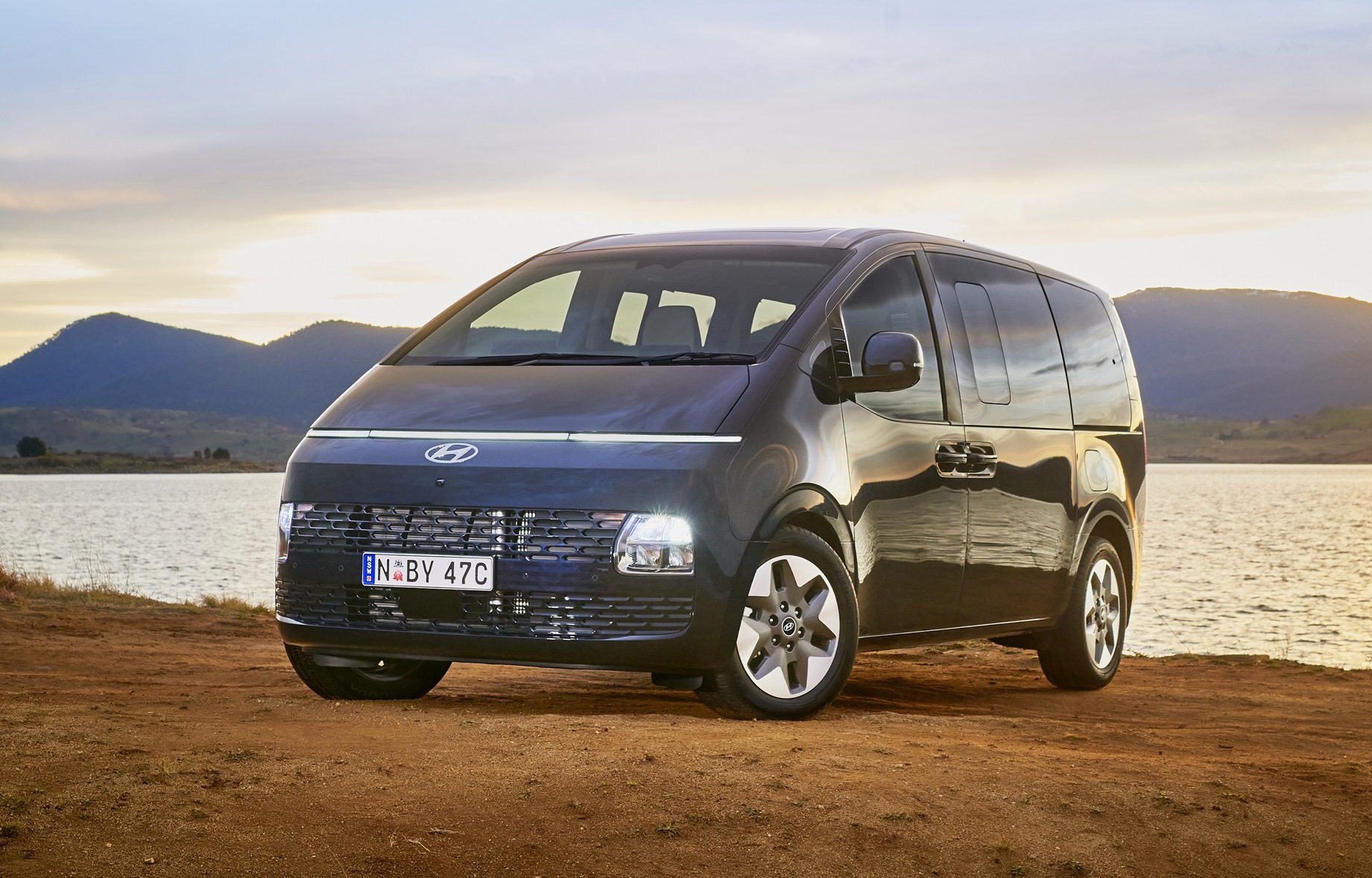
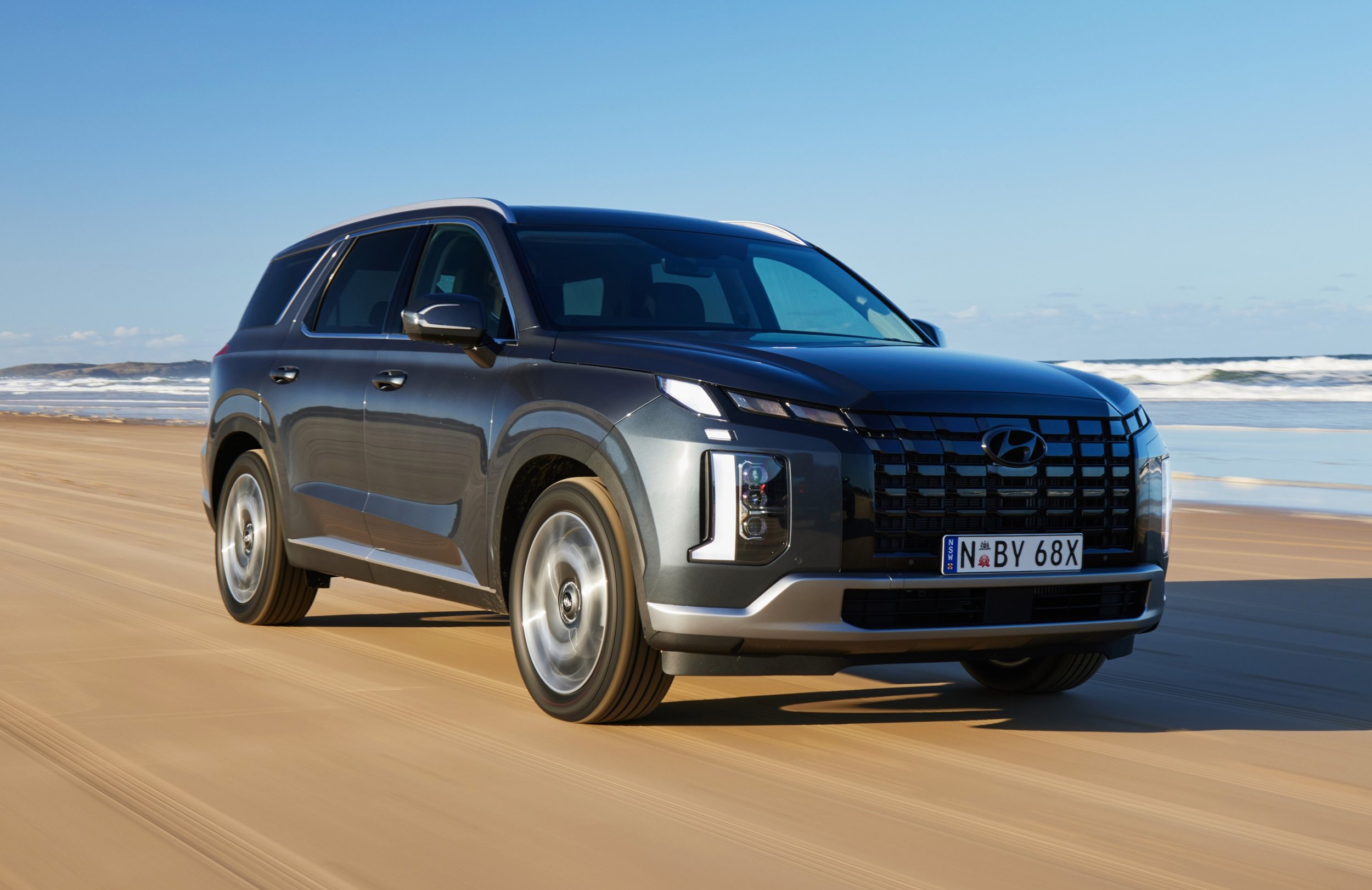
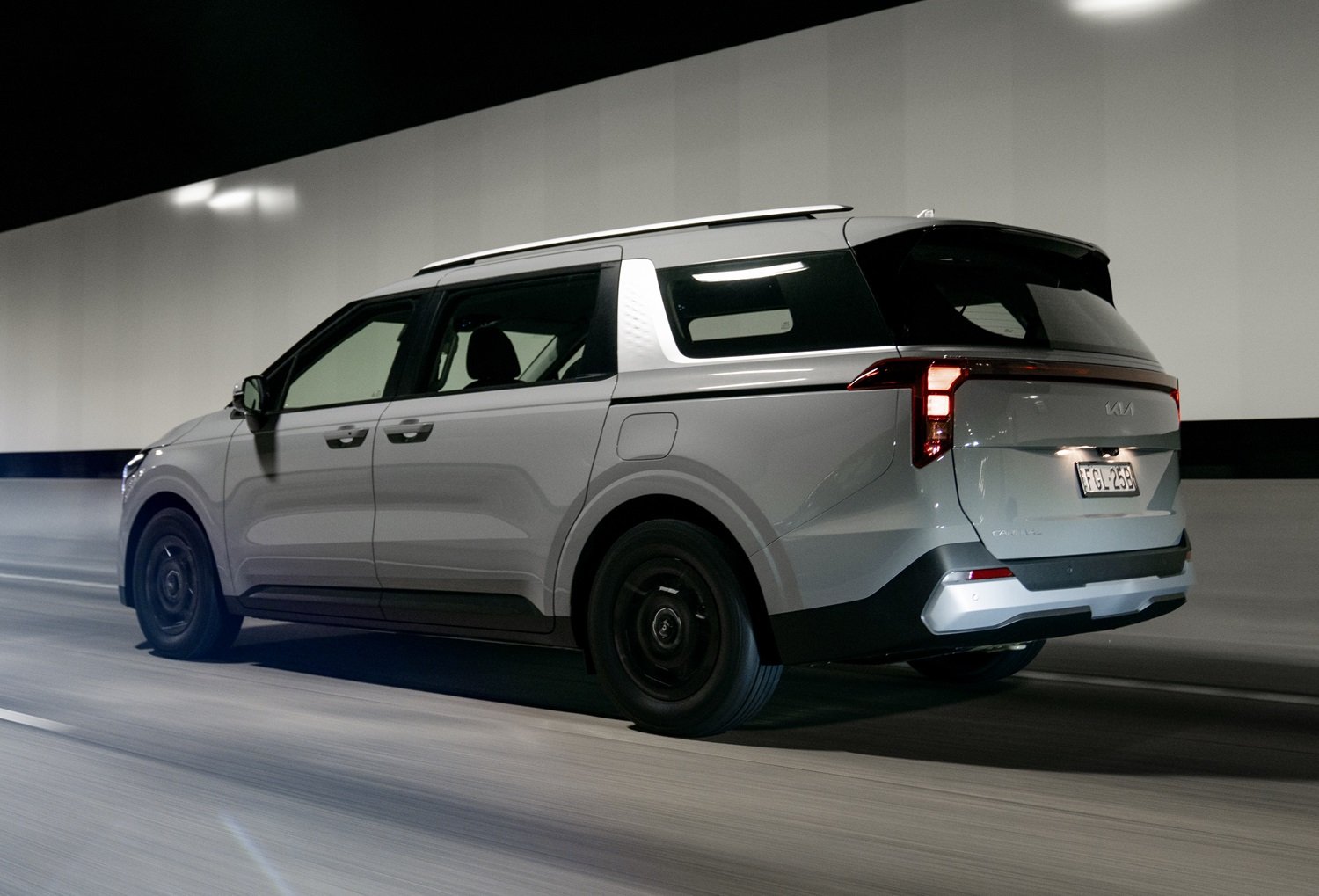
Mitsubishi 2.4-litre bi-turbo
This engine is in the new Triton ute and, presumably in the all-new version of Pajero Sport when it arrives in 2025.
An aluminium block with its 150kW of outright power output, Triton’s engine isn’t quite as macho as the V6 Ranger or Everest, but makes up for that having arguably the best off-road transmission - which can be driven in 4-wheel drive on sealed roads on slippery conditions.
Peak power is 150kW at 3500RPM and 440Nm of peak torque from just 1500RPM. In GLS spec, Triton has a power to weight ratio of 71kW/t, which isn’t as macho as say a Ranger Wildtrak 3.2, but the Triton gets particularly good support from Mitsubishi, while also being significantly more affordable - to the tune of about $15,000.
Pajero Sport offers the same power figures as the old MV Triton but still gets Mitsubishi’s eight-speed Super Select II transmission which is ideal for heavy towing up to 3.1 tonnes (although you’re advised against pushing that limit in a 2.2-tonne vehicle).
Triton and Pajero Sport also get independent transmission oil coolers for improved ventilation of the transfer case, which Ranger and Hilux don’t.
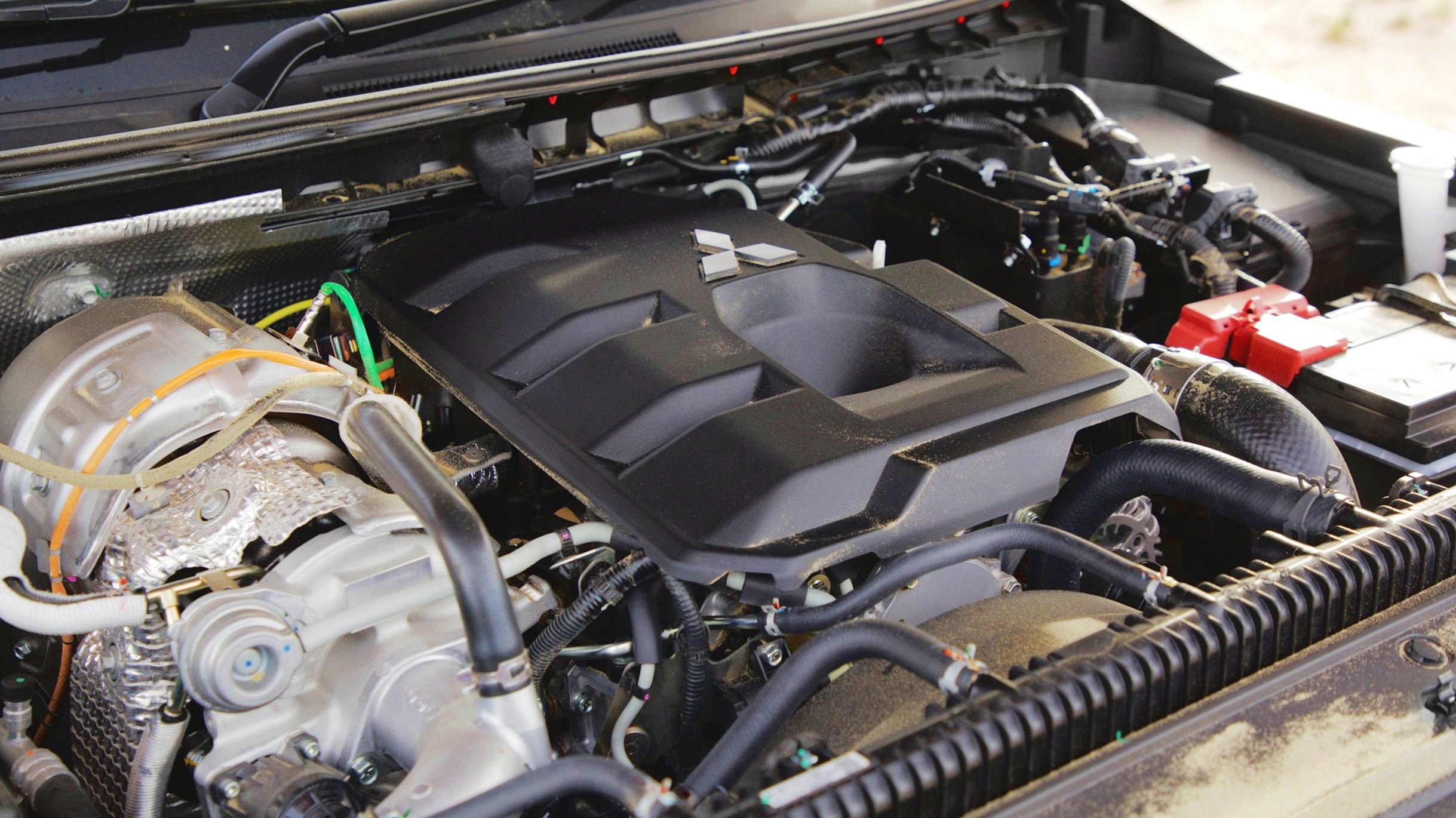


FORD RANGER & EVEREST 3-litre V6
Ranger is the most popular vehicle in Australia. It drips with sex appeal and it’s the only mainstream ute with a big V6 diesel. (VW Amarok shares Ranger’s fundamentals, but the Ranger will be better to own due to poorer VW customer support.)
Ranger V6 is the one you buy if you want maximum platform performance. The V6 in XLT is a solid multi-purpose work vehicle and family conveyance, whereas the 2-litre turbo four seems highly strung. Go XLS if it’s a cheaper work-only second vehicle and comfort features aren’t a priority.
Ranger is a decent workhorse and a great tow platform, plus its off-road credentials are awesome. Ford isn’t the most reliable brand, nor is it the best at customer support, but at least Ranger resale value seems strong.
Stay well below 3.5-tonne towing limit for safety/stability, but expect strong performance, even when towing and/or carrying heavy loads.
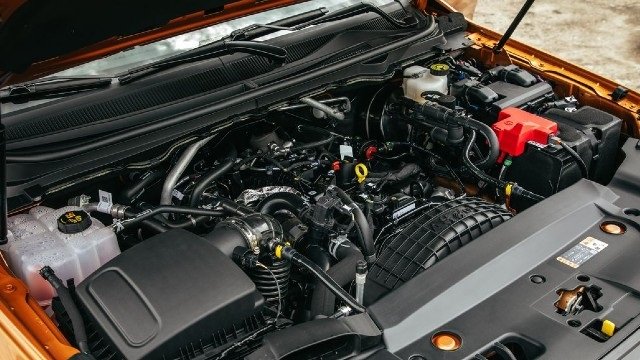
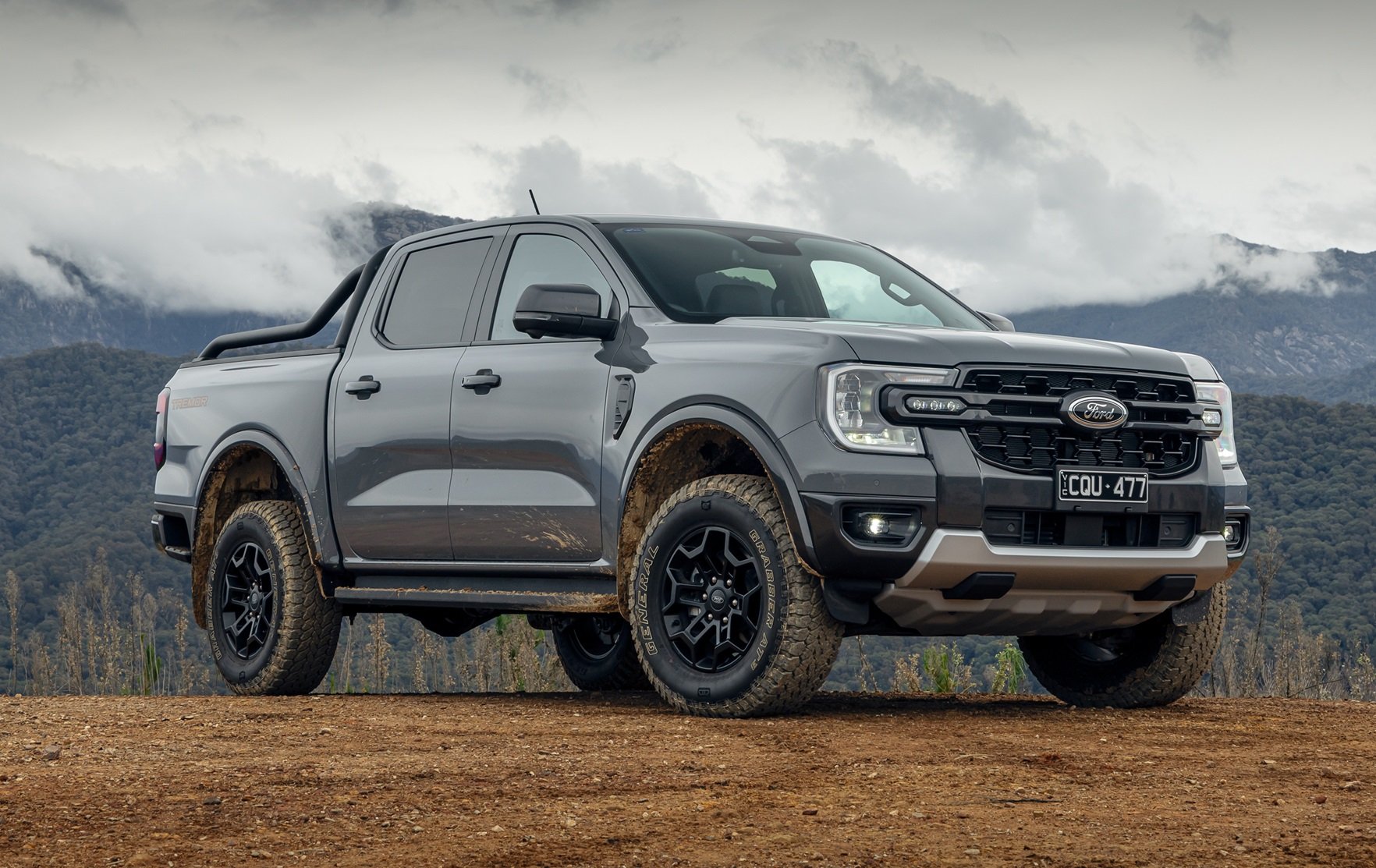

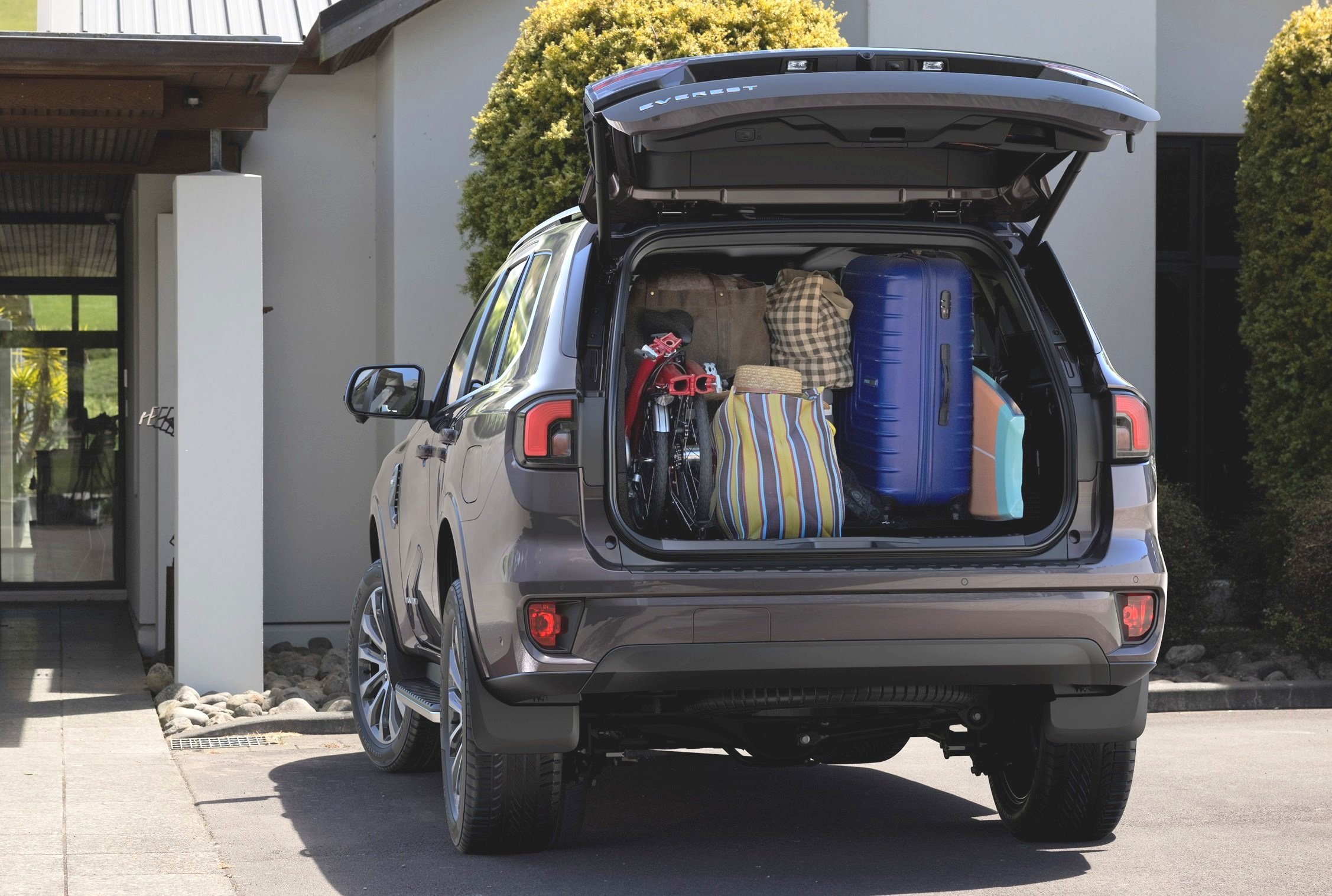
The Ranger/Everest V6 makes 184 kW of peak power, which is plenty for heavy towing assignments and general long-distance big trips, but the 2-litre bi-turbo 4-cylinder engine is a different story. It’s a pretty highly strung powertrain, which would be okay if Ford was good as R&D from a reliability standpoint, but they’re not, generally speaking.
The V6 will be the much less-stressed engine doing the same work as the 2-litre. It’s also worth considering that the Ranger/Everest range is quite expensive, comparatively, with something like the Triton/Pajero Sport or something more mild like the Kia Sorento - so if you absolutely need the beefier drivetrain, the grunt and the tray (in the case of Ranger), it’s probably going to be a good workhorse.
But if you’re not going to utilise the Ranger/Everest’s attributes, you could be over-spending.
Toyota LandCruiser 300 V6
The hallowed V8 diesel 200 Series engine is now a 3.3-litre twin-turbo V6 in the LandCruiser 300. If you want a more in-depth LandCruiser 300 review and buyer’s guide, click here >>
The TTV6 makes 13 per cent more peak power, 7 per cent more peak torque and returns 6 per cent better fuel economy - despite only reducing the kerb mass (in the case of Sahara) by 110kg (a reduction of 4 per cent).
The power-to-weight ratio of 89kW/tonne in the $130,000 Sahara, combined with that 2.6-tonne kerb mass, makes it iedal for heavy towing assignments - occasionally. If you want to understand more on the complexity of extreme towing, check out the AutoExpert Ultimate Towing Guide >>
Put simply, LC300 is better than the Triton/Pajero Sport on dynamic heavy-trailer stability and outright grunt - that’s a fact. But it is significantly more expensive, to the tune of 96 per cent more expensive for a Sahara than a GSR Triton. So how frequent are these big towing jobs going to be?
You have to wonder if you’re ever likely to use any of the fancy off-roading suspension they’ve packed into LandCruiser. Sure, the crawl control and ‘Kinetic Dynamic Suspension System’ (e-KDSS) stabiliser bar control system are clever, and no doubt they work. Just ask yourself how hardcore you’re prepared to be with your $160,000 LandCruiser - because that KDSS feature isn’t available on the hero Sahara, it’s on the ‘ZX’ which has a worse approach angle anyway. Click here for the AutoExpert Ultimate Off-Road Guide >>
If you tow moderately heavy loads fairly regularly, like a caravan or horse float, the 300 Series is decent, but overkill. Maybe that’s a good thing - it’s better to have more safety margin than less. Even a Nissan Patrol makes an economically rational argument considering the $30,000 saving - which does buy a lot of premium petrol for that snarling V8 (which isn’t long for this world).
There is also a bunch of buyers out there with zero intention of taking their LandCruiser anywhere near the open road or, heaven forbid, a dirt road. And that’s fine, it is a very civilised urban-assault vehicle.
Toyota 2.8L
Thanks to Toyota Australia installing a manual DPF regeneration switch to its Prado, Fortuner and Hilux 2.8-litre models, this particular diesel engine has proven relatively reliable. Who would’ve thought, the Hilux wasn’t “unbreakable” after all.
The turbo V8 diesel in the LandCruiser 70 Series ute and Troopcarrier range has also been replaced by the 2.8-litre turbo-diesel engine which is not the most powerful, but not the least, either. But having one just means handing over a bit more money.
For the 70 Series, you get 150kW peak power from 3400RPM and 500Nm peak torque at 1600-2800RPM, which is in fact more torque in the driving revs you’re most commonly going to be driving in.
The Hilux Rugged X has been dropped in favour of the GR Sport trophy truck, and just the Rogue if you want some garnish with your SR5. But you have to question the cost effectiveness of this. Do you actually need all that stuff, or would an SR5 suffice? And at $62,100 (approx. driveaway), you could have an almost top-spec Triton GLS for exactly the same price.
While the Toyota 2.8 DPF problem did take Toyota Australia far too long to actually fix (but not before plenty of denial), buying a Hilux is something of a religious thing in Australia - and that’s allowed. It’s a decent vehicle in many respects, without being the best value, but it is quite expensive and sells as popularly as it does because of the badge.
Toyota has a strong dealer network and are generally good at customer support. People trust Toyota, however mediocre the vehicles are on the product development front. Hilux also enjoys the best resale value in the event you decide to go for another one in five years’ time.
Mazda BT-50 / Isuzu D-Max & MU-X
Underneath, the Mazda BT-50 is an Isuzu D-Max, which also makes up the MU-X. They’re essentially the same vehicle, except Mazda’s designed an interior for civilised adults.
The 3-litre turbo-diesel 4-cylinder engine is certainly not new, not even from the modern era, like the motoring media might have you believe. It’s essentially related to the same diesel engine introduced 20 years ago in the Holden Rodeo (remember that?). Don’t buy into the ‘legendary truck’ marketing, because the 4JJ-whatever engine is an outdated boat anchor. Use-by date: expired. Reliable: Sure. Out-classed by most competitors: Definitely.
Although, this time around it’s had some semi-serious changes to keep you from noticing the reality. Apparently they’ve used a new engine block, cylinder-head, crankshaft and lighter aluminium pistons, and a new air intake system (which now faces forward - how original).
It also uses a new electronic variable geometry turbo, and a new DPF which is apparently lighter and more efficient. As far as we’re aware, Isuzu hasn’t had any significant in-service issues with its DPF which does a pretty good job of burning-off on its own. They claim a new dual-mass flywheel also helps reduce the appalling unrefined vibrations the previous model’s drivetrain was infamous for.
Power is adequate. Like, barely: 140kW of peak power at 3600rpm, and 450Nm peak torque from 1600-2600rpm. So it’s basically the same as a Toyota Prado 2.8-litre diesel. Congratulations. It’s a pity because Mazda’s SKYACTIV 2.2 diesel in CX-5 and CX-8 also offers 140kW (peak power) and 450Nm (peak torque). With 26 per cent less capacity, that means it’s more efficient.
The ‘truck engine’ image is alluring, which seems to attract a certain type of consumer. But the BT-50 is definitely the nicer vehicle to sit in, especially in SP trim. Don’t get too ambitious with towing the claimed 3.5-tonne towing capacity, because that would be dangerous in a BT-50 only weighing a maximum of 2.2 tonnes before adding the bolt-on bogan accessories with the ‘Thunder’ variant.
BT-50/D-Max are decent off-roaders, but they lack a centre differential, meaning you can’t drive them on wet sealed roads or high-quality gravel roads in 4-High in the manner of a Triton. It’s 2WD only in those instances for BT/D-Max, lest you risk driveline damage.
.
MAINTENANCE
DIESEL PARTICULATE FILTER
One of the two most important obligations you will have to your shiny new modern diesel engine is keeping the DPF healthy.
This means ensuring that at least once a fortnight you get out on the freeway and drive at about 80-100km/h for a sustained period, about 20-30 minutes. This ensures the DPF gets hot enough to sustain a critical burn process of the carbon nanoparticles which build-up in the exhaust’s filter system.
Don’t ever let anybody tell you deleting your DPF or the Exhaust Gas Recirculation (EGR) system, because not only is it illegal, it’ll also kill your warranty, and will probably cause even more problems down the track. EGR makes engines more efficient and it reduces emissions. So don’t tamper with them.
When or if your DPF warning light comes on, it’s unsettling. So you need to understand what to do in that heart-palpitating moment. If ever your DPF warning light illuminates in your new diesel vehicle.
But it’s important to understand the DPF warning light and any problems of this nature can often be the symptom of you not doing enough highway driving to allow the system to perform its burn-off regeneration process.
If you do regularly get out on the highway and allow the DPF to do that regeneration, then you can be pretty confident there’s a problem further upstream of the exhaust system. One common cause is a tiny air leak in the silicone hose at the MAF sensor tricks the computer into thinking it needs to inject more fuel into the cylinder and therefore runs rich and ramps up the blockage problem.
Use a qualified technician who knows what they’re doing to service your DPF: Don’t be scared to ask you local mechanic, and if he/she isn’t confident, ask if they know any reputable, qualified diesel technicians. Ensure they use the correct low-ash oil as required by the manufacturer during servicing: Again, ask, check in the manual, write it down. And confirm they have reset all the appropriate computer settings including the oil dilution reset.
And also remember the owner abuse factor. Owner abuse is how manufacturers dodge warranty claims because DPF abuse is very much part of that. If you have a serious DPF regeneration problem, they will likely fight you by exploiting a case for inadequate driving conditions, forcing you to foot the four or five-figure bill.
If you’re a Monday-to-Friday tradesperson who is on the road by 6am and knocking off in the early to mid-afternoon in order to ‘beat the traffic’ (along with every single other tradie, delivery driver, courier and truck), then you’re going to get the best use out of a diesel.
You’ll easily satisfy the DPF’s highway requirements, and you’ll get to take advantage of the pliable powertrain and smooth throttle response, especially with equipment in the back of the ute and a trailer full of tools. Same goes for vans, which are essentially never free of any load from the moment they leave the dealership.
However, the diesel SUV market has been something of a misnomer over the last decade. Some brands have refused to go diesel or dropped theirs entirely, either as a result of the epic work Volkswagen did to ruin the diesel’s reputation.
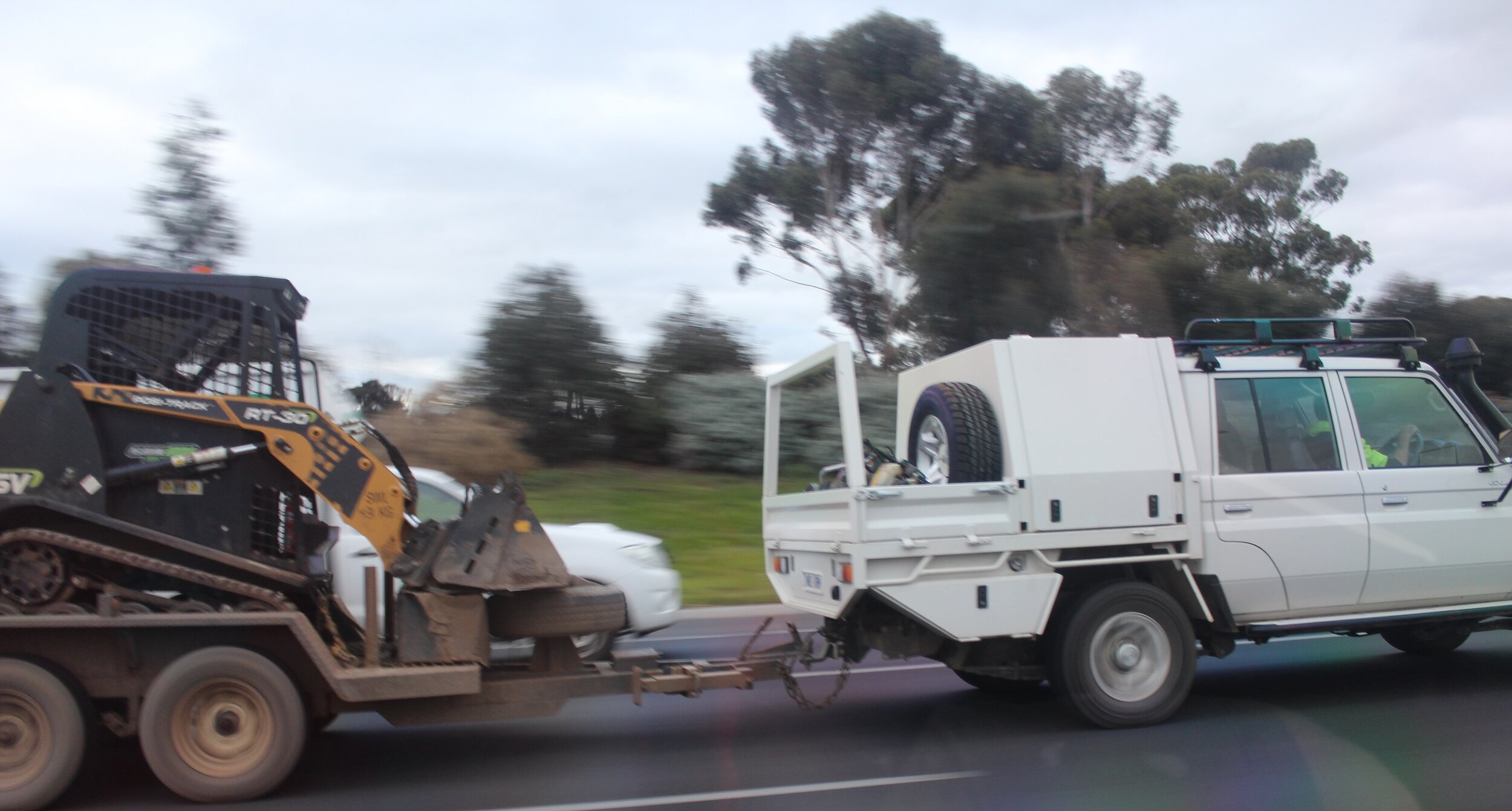

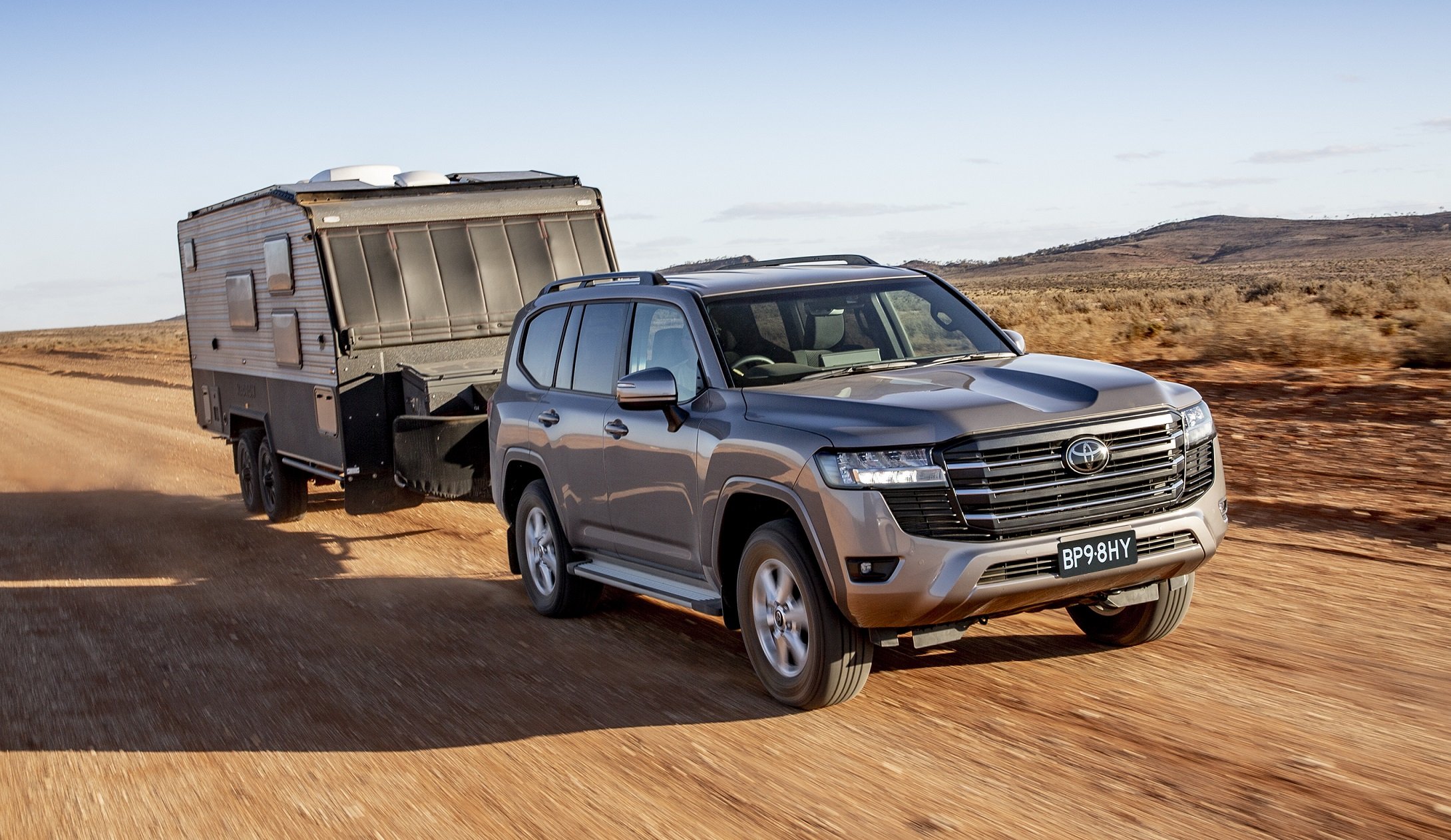
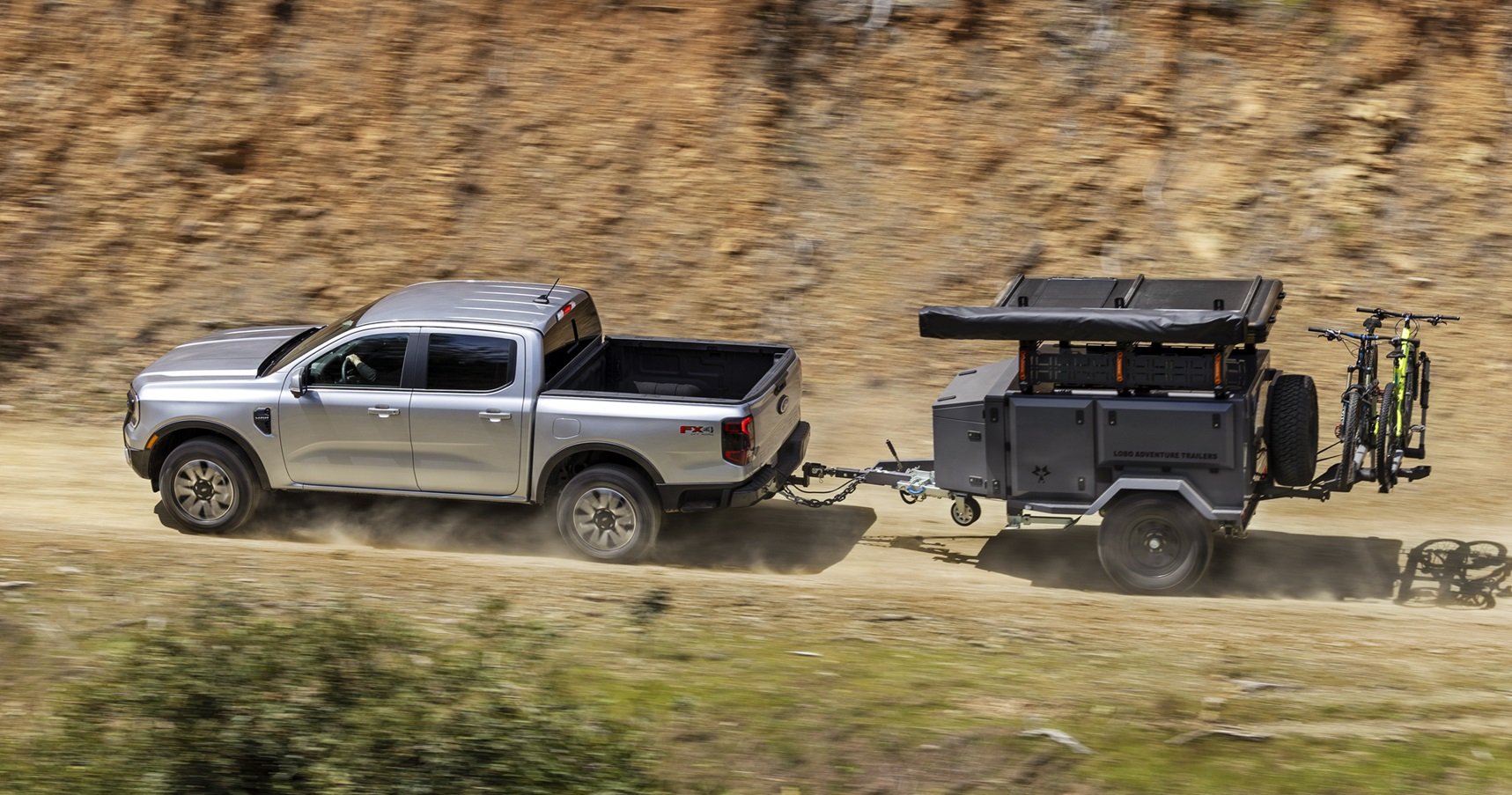
When parking your shiny new diesel, which probably has a turbo, you need to be conscious of the turbo too.
If you get to a destination after working hard, putting lots of power down to the ground, climbing hills or towing something heavy, when you get to your destination and you park, give the car about 90 seconds to 2 minutes of idle, in park.
The turbo has been working really hard, turbochargers get really hot because they are powered by hot energetic exhaust flow (about 600-800 degrees) quite close to the exhaust manifold.
If you just turn the engine off it’ll cook the oil inside the turbocharger housing. Doing this idle for a couple of minutes will allow water flowing through the water jacket to cool it down, or the oil will continue to circulate and gradually cool down to an acceptable level.
Highway driving generally is pretty low-load for a turbo-diesel, with light throttle inputs and mostly cruising. But if you stop the car, select Park, put on the park brake, get you and the kids ready with the engine on, by the time you’re ready, if you then shut down the engine, you’ll give it a cooling off period.
Lots of straight shutdowns with a hot turbo-diesel over time, with no cooling-off, all those incremental turbo-cooks will gum-up the oil pathways and eventually you’ll be driving, the oil pathway will lock-up and you’ll be up for a multi-thousand dollar repair job.
If you do lots of heavy towing or lots of cold starts, service the engine early, from 12 months to six months, for good measure.
When your DPF warning light comes on, remember this: Orange warning lights are sub-critical events. You need to act, but it’s not life and death for your engine.
Red warning lights, on the other hand, are reserved for engine life and death.
So, vehicles are subtly different, and the DPF light activation scheme varies. Consult the owner’s manual, and do what it says.
A flashing orange DPF light (or whatever the primary activation mode is) just tells you that the filter is getting loaded up, and a burn or regeneration is necessary and/or overdue.
The car knows this because it measures the pressure drop across the DPF. More pressure drop = more clogging, which = need to regenerate now. Regeneration is usually seamless and automatic, in the background, but for some reason this has fallen over on your vehicle.
So as soon as you can, get out on the highway and go for a free-flowing cruise. Make it a priority because not addressing this will get expensive. Aim for about an hour of cruising - 50 kays one way, and return (ish). So, 100 all up.
Don’t shift to second and rev the crap out of the engine on some quiet suburban street, or try any other hack to regenerate - specific conditions need to be met before a filter regenerates.
Highway cruising is the easiest way to meet those conditions. If the light goes out, it worked. Excellent. If not, you need to visit a workshop. It can be a dealership or an independent workshop, but if it’s an independent make sure they’re familiar with this problem.
They can plug in to the diagnostic port and force the vehicle to do an aggressive regen in the service bay. And that might turn the car’s DPF frown upside-down. If that doesn’t work, you can look at getting the DPF cleaned. They can inject special solvent and attempt breaking up the blockage. It’s worth a shot - because this is much cheaper than a replacement DPF.
SERVICING
The vital ownership requirement of a modern diesel is routine servicing. This is the case for any petrol engine too, but it’s important to make sure you strictly adhere to the scheduled servicing outlined by the manufacturer for your diesel because not only has it been working very hard, but also the nature of the diesel’s internals are more sensitive.
Those servicing intervals are based on time or kilometres driven - whichever occurs first. You cannot push the time just because you haven’t driven much (like over Christmas holidays or whatever), because sitting stagnate is also hell on earth for engine oil, which increases water dilution.
The worst thing you can do to a car - one of them at least, is a series of never-ending short trips combined with long service intervals (or simply not getting it serviced at all).
Lots of blow-by, sub-optimal expansion of the parts. Low temperature of the oil. Lots of oil dilution and major contamination.
Then, let’s say you go a month or three over on the servicing, and you might rationalise this to yourself by saying: The schedule says 12 months and 15,000km. OK - It’s 12 months but I’ve only done 10,000 - I’ll wait.
People do this all the time.
You’re creating hell on earth for your engine oil. There are no symptoms, but that doesn’t mean this is not a very bad idea. If you do predominately short trips, you are exactly the person the time-based service interval was invented for.
ADBLUE
AdBlue is trademarked by the German Association of the Automobile Industry - meaning that anything marketed as AdBlue is just a 32.5 per cent solution of urea in de-ionised water. It is also sometimes called DEF for 'diesel exhaust fluid'.
AdBlue is clear, non-toxic and safe to handle, easy to make and store, and it’s classified under the ‘minimum risk’ category for transportable fluids.
Is AdBlue a substitute for a DPF or does it work in conjunction with the DPF? If so, why do some vehicles use it and some don't?
The Ford Ranger and Mitsubishi Triton now come with dedicated AdBlue refill apertures and you can expect that future generations will get AdBlue systems fitted to their diesel powertrains. It’s common in late-model diesel trucks as an emissions regulation compliance feature.
The basic problem with exhaust is the four things coming out of it that are pollutants. This excludes CO2, because there's nothing you can do about CO2 (or water) due to it’s intrinsic connection to combustion; it cannot be avoided;
Soot particles: there's more particles with diesel than there is with petrol, but this soot gets trapped in the lungs;
Oxides of nitrogen: That you're breathing now is 78% nitrogen gas and that's what causes oxides of nitrogen;
Carbon monoxide: a deadly poison and;
Unburned hydrocarbons: the exhaust of a modern car and the exhaust of some 1970s shitbox could not be more different, because of the gross reduction in those four things coming out of the exhaust pipe.
Your DPF sucks out the soot particles and breaks them down in a furnace, you've got your catalytic converter dealing with oxides of nitrogen, and then there’s the unburned hydrocarbons and the carbon monoxide.
Australia still has not adopted Euro 6 emissions standards - we're still in Euro 5- and that's part of the problem. To comply with Euro 6, which is in place in civilised countries, you basically need ad blue in the diesels.
EXHAUST GAS RECIRCULATION
The ‘exhaust gas recirculation’ (EGR) is a system that pumps exhaust back into the inlet of your engine, at times, in measured doses.
Certainly it probably sounds counter-intuitive to be pumping yucky exhaust back into a perfectly serviceable engine; it sounds bad. But in fact, doing this actually improves fuel economy and also reduces toxic emissions, because: physics.
Just to further your understanding of these systems, diesels do this more enthusiastically than petrol engines, but they both do it. It’s also becoming more popular in the car industry as emissions regulations tighten over time.
The EGR system is capturing hot, highly energetic exhaust gas from between the manifold, and sending it back to the inlet side of the engine, and that heat is a gross disadvantage to engine operation.
Therefore, water from the engine’s cooling system is pumped through the EGR unit, in a mini heat exchanger, whence it captures some of this heat before it gets to the EGR valve. That heat is ultimately rejected in the vehicle’s radiator, which is designed to stop things going automotive-Chernobyl.
Watch the video below for the full details, and use the diagram above to identify each piece of the EGR system.
So, just roughly, if you’ve got about 10 litres per minute circulating through the EGR heat exchanger and it goes in at 50 degrees C and comes out at 100 (it’s okay, it’s unlikely to boil because the system is pressurised) it’s removing about two million joules of heat energy every minute from the EGR system.
That’s, like, 35 kilowatts of heat rejection. That’s a lot. A 35-kilowatt radiator would warm up a somewhat large room, even if it’s snowing outside. The point is a small amount of water can carry away a great deal of heat energy, because water is properly miraculous stuff.
If the EGR cooling system develops a leak, water can escape into the recirculating exhaust gas, and pass through the engine, and disappear out the exhaust pipe, with virtually no symptoms, except of course for gradual coolant loss, the cause of which can be hard to diagnose.
The loss is easy to identify. Where it’s being lost is not so easy. If that happens, the whole EGR body, which is typically one big stainless steel bolt-on component, needs to be changed out. Fortunately, that’s a relatively simple job, generally speaking.
the dealership will attempt to take you to the ankle-grabbing room over it, but it’s really just a new EGR body out of a box, three or four bolts, a gasket and a couple of water hoses. Of course, some disassembly might be required to gain physical access to that area in the engine bay.
Repair bills are never uplifting. The advice there: accept it or get a quote elsewhere.
Pro Tip: Whatever you do, do not be one of those muppets who deletes, disables or modifies their EGR system like some do with their DPF. Not only is it illegal, it voids any statutory warranty or consumer rights you might have with that vehicle (regardless of the manufacturer’s warranty), and it only makes matters worse. Aftermarket modification is a minefield - don’t walk that line.
One viable solution is installation of a catch can. Keep scrolling for more on this…
.
DIESEL MYTHS & TRUTHS
There’s absolutely no denying we live and die by our vehicles, whether it’s the tradie work ute or family SUV, our lives are emphatically less shit thanks to the seemingly infinite mobility a modern diesel engine offers.
But not all modern diesel engines are equal and not all brands offer you the same level of customer care and support - yeah, looking at you, Land Rover, among others.
If you are strictly an urban dweller, who drives ten minutes in built up traffic just to do the return shopping trip, then I’d suggest you need to be careful about which car you buy. Sitting in commuter traffic four out of five days per week, with little or no highway driving, is a good recipe for a shit sandwich if you buy the wrong vehicle.
But if you buy your diesel and treat it with the due care it requires, you’ll reap the benefits of both an efficient and effective powertrain that is good on fuel, but also one that has a wide variety of applications.
Diesels are better for towing due to their tendency to be more predictable and linear in their power delivery, as opposed to petrols which are more prone to spiking revs and having to be worked harder to achieve similar acceleration and power delivery as the smoother diesel.
When you’re off-roading, the gradual power delivery of a diesel engine means you can modulate the throttle better in soft sand or slippery terrain when you need to be gentle. A petrol engine, like a shitbox Jeep Wrangler or something would spin its wheels.
If you’re in the market for a new vehicle and a diesel is on your list, I urge you to think about what the vast majority of your driving is going to consist of. Ask yourself what you want the vehicle to do and asses, honestly, if you can respect the needs of a DPF.
You also need to be regimented with your servicing if you’re going to be a regular heavy tower, or if you plan to take your diesel off-road frequently. You might even want to consider long-term intermittent servicing if you have extreme use in mind.
Modern diesels are far from the noisy, dirty shitboxes which were only ever used by old Land Rovers and tractors. They’re full of brilliant engineering, are very precise and economical.
The weakest link in the diesel’s ownership chain is the human who buys it. Love your diesel and it’ll love you back - in an entirely plutonic way, of course.
If you have any specific questions relating to your diesel purchase, or you want advice on which one to buy, you can email me directly and I’ll give it to you straight.
PRICE OF DIESEL
petrol is more of a commuter fuel, meaning commuter behaviour determines the demand for petrol, which is why petrol prices go up every school holidays - because people tend to do more long distance driving, particularly around Christmas.
However, diesel tends to be more linked to economic activity and logistics demand. So when there's an increase in logistics-type activity with trucks and big infrastructure etc - remembering that everything you see on the shelf at the supermarket or in the shopping centre was brought there by a diesel truck - every shipping container, every pallet, every tradie ute, every courier van and every light truck is all reliant on diesel and pushes up demand.
That kind of logistics operation happens by truck which is why the price of diesel is directly linked to inflation, because when diesel goes up, the price of everything goes up. It’s the logistics component to the price of everything.
Australians need to stop complaining about the price of fuel - it's nauseating. Fuel, in general, is cheap in Australia.
Australia has the fourth cheapest fuel in the OECD. The reason it's so cheap in Australia is because we have low taxation on fuel. Yes, there is tax, and yes, it is a significant component of the price. But it’s still low on the world stage.
In fact, you break down the price of petrol all around the developed world, the difference in price per litre is essentially the difference in the tax. Thank your local Federal member of parliament for the low taxation we enjoy in Australia on fuel.
Compared to our mates in Italy, the UK, France or even just next-door in New Zealand, Australia is fortunate to have fuel as cheap as we do. Buy a couple of litres of diesel in New Zealand and see how freaking expensive it is.
RUNNING LEAN
A lot of people think about modern diesel engines in terms of leanness and wide-open throttles and so on, so let’s talk about that.
In theory, diesels do not need throttles because performance is regulated by the delivery of fuel and they run wide open, as it were, on air. More fuel: more performance. Less fuel: less performance. The air intake is unrestricted; that's diesel in theory.
For many diesel engines, that’s how it works in practice.
But quite a few modern diesels also actually have throttles that are ECU controlled, so basically like a throttle-by-wire system (or by-computer if you like) and what that throttle does is make it easier to manage the exhaust gas recirculation system.
If you run a diesel engine too lean, temperatures spike and NOx emissions go through the roof. Fuel economy might increase, performance might also increase, but the air gets much more toxic.
Modern diesels can run rich or lean despite having no throttle whatsoever. Because they are dependent on the fuel delivery system, using the ECU’s precise calculations, to determine how much goes into the combustion event.
For more detail on exactly how this process works, watch the full video above.
RUNNING IN
It’s a good idea to run a car in progressively over the first 500-1000 kilometres. Vary the speeds and the loads, and don’t be too gentle, especially in the second half. Don’t thrash it, but don’t be too soft either. We’re shooting for Goldilocks here.
If the vehicle you’re running in is about 2200 kilos empty, the total payload of that vehicle out the back (in the boot or in the tray etc) is actually pretty light in the context of operational capability. So don’t stress too much about carrying some cargo in your new diesel vehicle during the running in period.
What matters is variation of the driving conditions.
There are two prevailing myths about running-in engines and they are both emphatically wrong. First is: engines are already run in at the factory, so you don't need to worry about it. WRONG. The second myth is usually from the guy who's going to tell you that running-in is very complex. But frankly, to get this right you don’t need to be an engine engineering Yoda.
It is actually very simple to run-in a brand new engine. You can get this right, because the environment that most people drive in is absolutely perfect, as long as you play by just a few caveats. Watch the video below for what they are.
The latent impression of running-in an engineering is steeped in history - which makes it 40 or 50 years out-of-date - because a lot has happened in that time in terms of lubrication, in terms of metallurgy, and in terms of the tech and components in a modern engine.
Watch the full video to understand exactly how to run your new diesel engine in and how not to run it in.
You can also get the the technical deep-dive on anti-friction piston coatings and cylinder bores honed to virtually a mirror finish, and pre-ground multi-angle valve seats and camshafts directly on a tap, or roller rockers, variable valve timing, modern high-tech lubricants and all kinds of stuff that was very exotic in the 70s but is mundane now.
Once you hit that magic 1000km run-in milestone, if you want to go the extra mile to ensure perfect engine conditioning here’s what you do: change the engine oil.
MIS-FUELING
This is a dead-easy mistake to make - especially if you are new to diesel. And it can cost you an arm and a leg. Worst-case scenario: you’ll be on the hook for $10,000-$15,000.
Here’s what happens if you accidentally make this mistake:
Diesel engines use very precise high pressure pumps to amp up the pressure in the fuel rails to about 2000 atmospheres. This seems excessive, but the extreme pressure is needed for injector control in the millisecond domain. Very precise cam-type fuel pumps are used.
Unfortunately, they need the lubricating properties of diesel fuel to function and survive. Petrol has lots of interesting properties; lubricity is not one of them. So the hardened steel faces on the cams disintegrate, and the metal fragments travel quickly downstream where they lodge in the microscopic holes of the piezoelectric fuel injectors, destroying them, too.
This is a five-figure mistake. Everything downstream of the high-pressure pump needs to be replaced. Everything upstream, including the fuel tank, needs to be cleaned out.
CATCH CANS
In practise they vent the crankcase by way of a so-called ‘breather’. They - whoever ‘they’ are - used to vent those vapours to atmosphere but that’s not the most environmentally defensible option, so now they feed those oily vapours down the engine’s neck and purify it in the combustion chamber.
It’s a good idea in principle, with the one downside being potentially coating the inlet plumbing’s guts with an oily residue of formerly aerosolised oil, fuel, water and sundry scummy crap from the crankcase.
On its own, this is not a disaster.
Fitting a catch can is, of course, up to you. But note that a lot of the people doing the recommending of catch cans are generally the ones selling them. Watch out for these commercial conflicts of interest (the worst-case scenario) or at the very least it’s an example of extreme bias.
If you decide to fit a catch can, or if you’re simply doing your research, get a reputable one from reputable brands. A high-quality catch can is one with baffles and a proper oil separating system inside - not just an empty box - and get it fitted by a qualified, reputable professional with appropriate product liability insurance. Why all this fuss?
Because you’re bolting this thing to the most expensive component of your car - the engine - the replacement cost of which will be horrendous if there’s a problem. Someone has to carry the liability for that modification, and it might as well not be you.
If you want to understand the full gambit of fitting a catch can to your diesel vehicle, watch the full video above.
MODIFICATIONS
Re-chipping, re-flashing and re-mapping your engine control ECU: Many people queue up to do it - and often it ends in tears.
Plenty of would-be vehicle buyers, especially those of the 4X4 wagon and ute persuasion, are already planning what they consider the all-important ECU re-map. This might be you.
If that is you, emphatically, buy a vehicle that is adequate to your requirements, out of the blocks - and don’t re-map the engine ECU. It sounds like a great idea: just a few taps on the keyboard = more kilowatts and more Newton-metres at the rear wheels.
When your engine blows up, an aftermarket engine control ECU is a great deal for the carmaker - because it essentially allows them to sidestep any accountability for engine or powertrain failures.
Aftermarket chip retailers do not have a test-track and a couple of engine dynos running flat-out, doing extreme accelerated life component testing on all the makes and models they re-flash.
Do you think they bother to establish emissions compliance? Do they have a budget to compensate you for a catastrophic engine failure? Unlikely.
Think about this a little bit harder than the vague claims on their website.
These malignant keyboard jockeys can certainly over-fuel an engine at wide-open throttle get power, or lean it out at part-throttle thereby pushing the NOx through the roof, while saving a tiny bit of fuel. But there’s no free lunch here.
You cannot do this without compromising reliability and/or emissions. It’s easy to pump up the power and shred sixth gear pulling a heavy trailer up a shallow incline at 80 kays an hour on the freeway. That’s going to be a memorable day out with the boat.
The manufacturer has every right to decline your warranty claim in these circumstances.
Buy a vehicle that performs as you require in its standard configuration. Engine, handling - whatever - do not step across the line and open Pandora’s box by re-mapping the engine control ECU. Unless you want to wave goodbye to essentially all consumer safeguards.
.
BUYING
Shopping for a dual-cab ute like the Mitsubishi Triton, Mazda BT-50 or Ford Ranger, a 4x4 wagon like Mitsubishi Pajero Sport or Toyota LandCruiser or in the large seven-seat SUV segment for a Kia Sorento, Hyundai Santa Fe, Mitsubishi Outlander - or possibly even a people mover like the Kia Carnival - then you’re going to have to live with diesel.
Which means you need to know if the petrol alternative is a better option for the majority of your driving situations.
Does 90 per cent of your driving occur in stop-start commuting traffic in one of Australia’s capital cities? Are you based in the outer suburbs or a regional city or town where freeways or rural B-roads are the staple? Perhaps you work alternative hours and frequently use major arterial roads when they’re mostly free-flowing, and you don’t encounter stop-start traffic all that much.
This needs to be part of your thought process before deciding between diesel and petrol.
Most modern diesels, especially from the brands routinely recommend at AutoExpert, are pretty reliable. Complaints are rare from the likes of Hyundai and Kia, Mitsubishi or Mazda - generally, and even Toyota seems to have bounced back from its DPF dramas in 2018.
But they come with a caveat to ownership. You have to be prepared to give the diesel particle filter (DPF) the sufficient amount of sustained highway driving in order to do its mad regeneration voodoo. This shouldn’t be an inhibitor to you buying one, because the benefits of modern diesel ownership are significant. Don’t be put-off by a DPF and the diesel engine it’s attached to, just keep this in mind as one of your ownership routines.
It’s like owning a dog. You have to feed it, water it, talk to it, and exercise it. Your modern diesel needs to be taken for a reasonable walk every now and then, so it stays healthy and doesn’t leave you with a repair bill with three zeros on the end.
That’s not to say it’ll go poop in its DPF trousers, this is simply about keeping it in tip-top shape and extend its long-term viability, like any mechanical thing, including petrol engines.
When you take your potential next diesel for a test drive, propose taking it through a range of different driving situations where possible. Try it in traffic, on the freeway, try low-speed manoeuvres and do plenty of tasks which require a variety of throttle positions to see if you can deal with the nuances of throttle management.
You can always come back to this cheat sheet of what AutoExpert regards as the best diesel engines on the market, for their reliability, their performance, and the overall vehicle they’re packaged with.





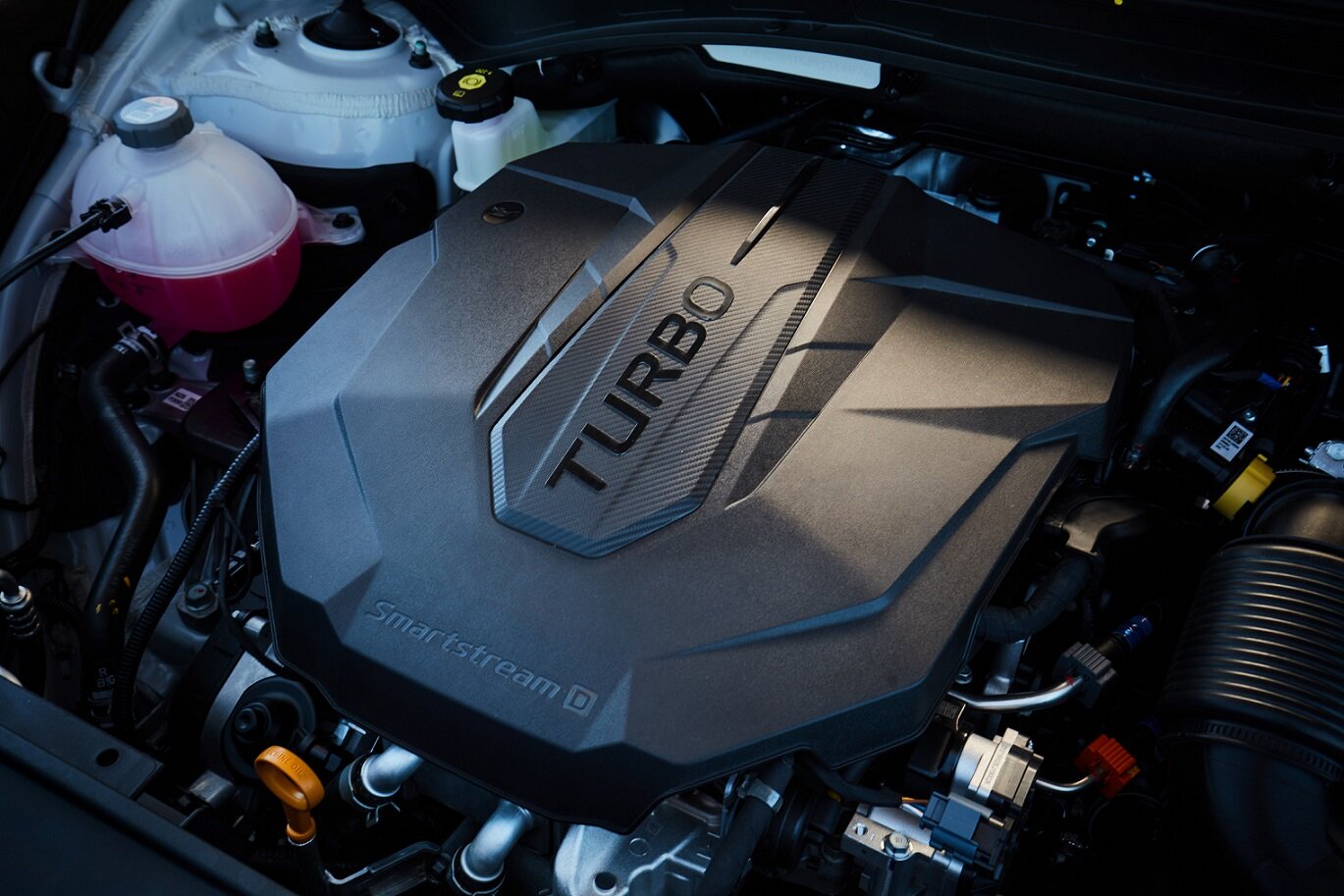

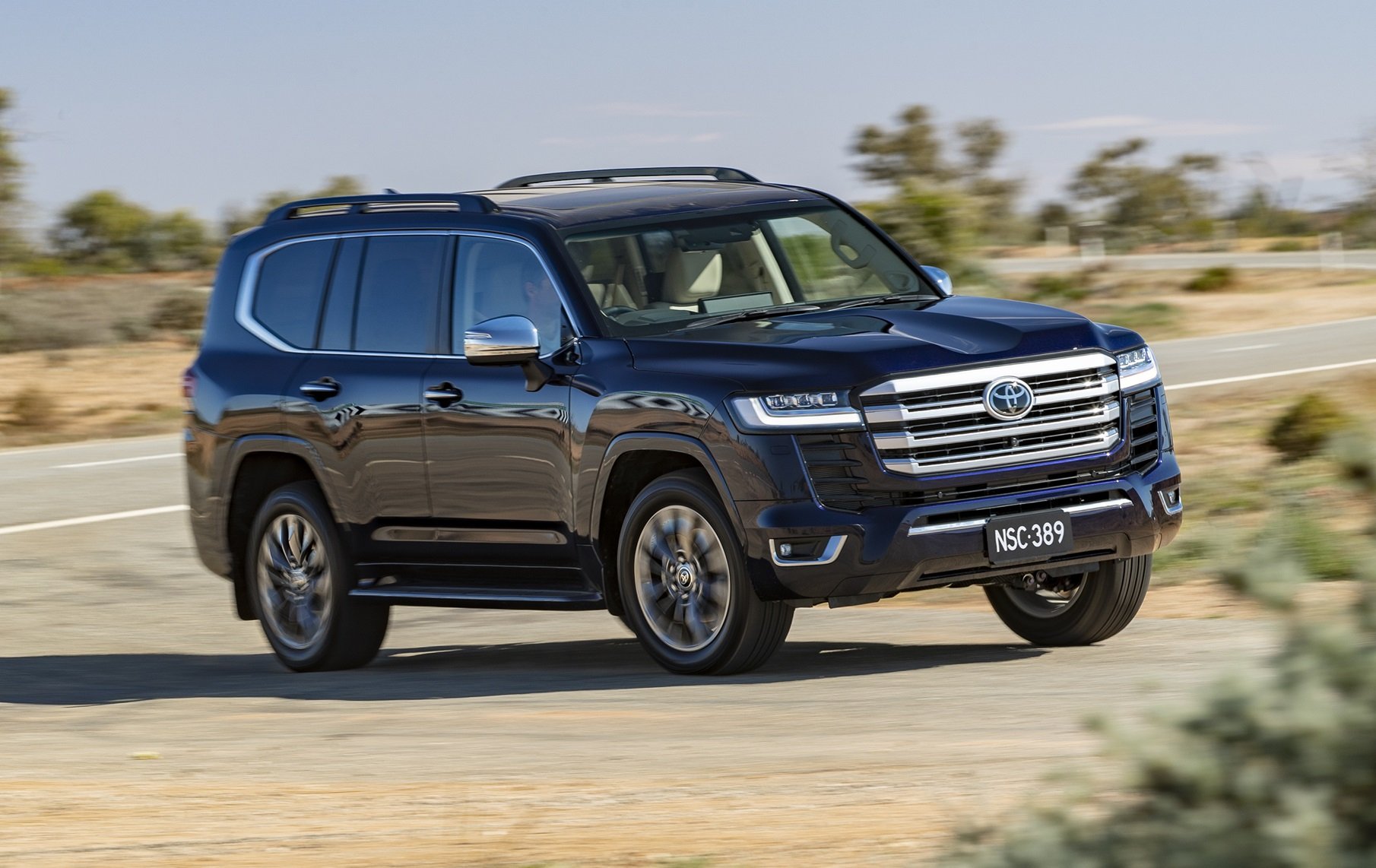

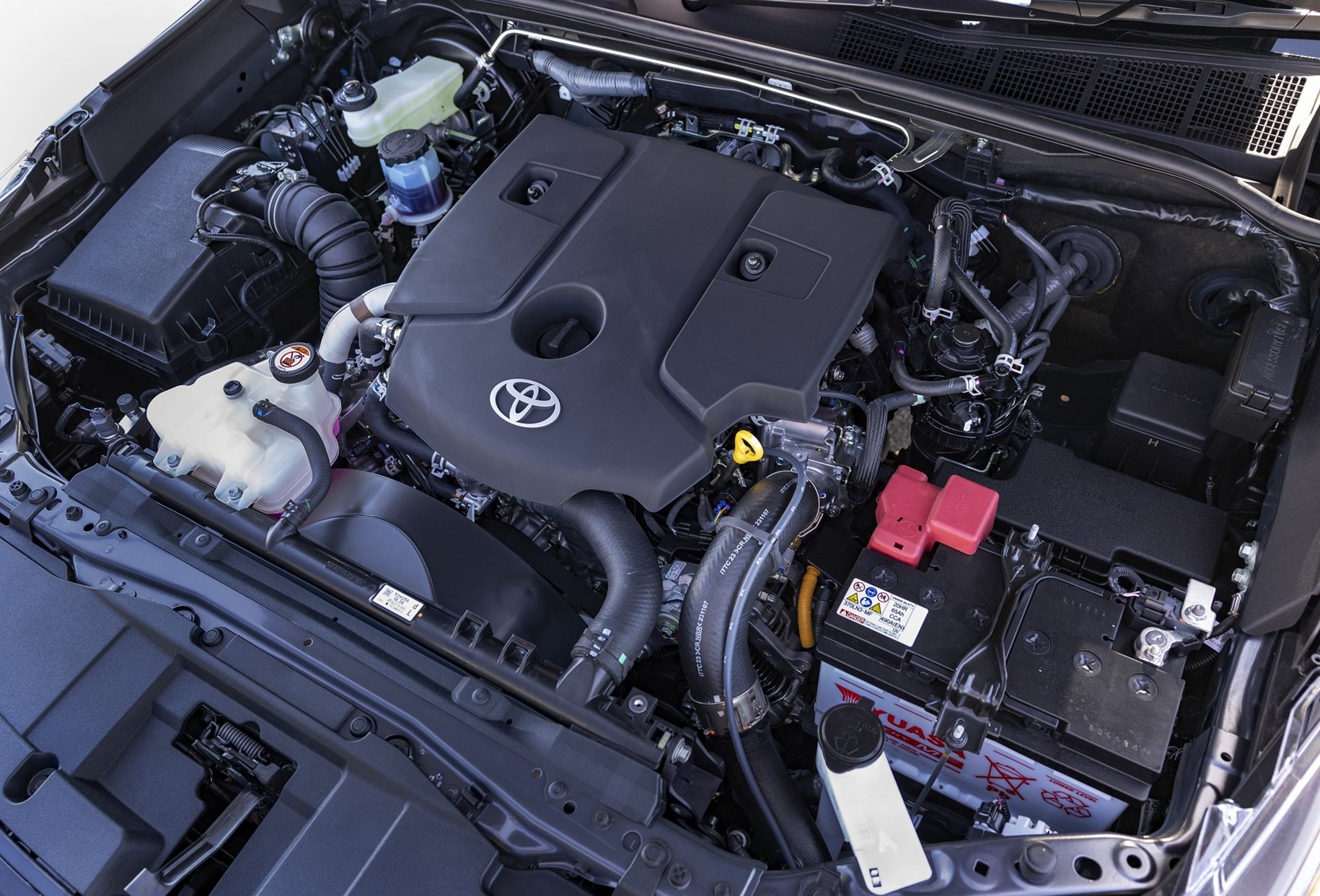
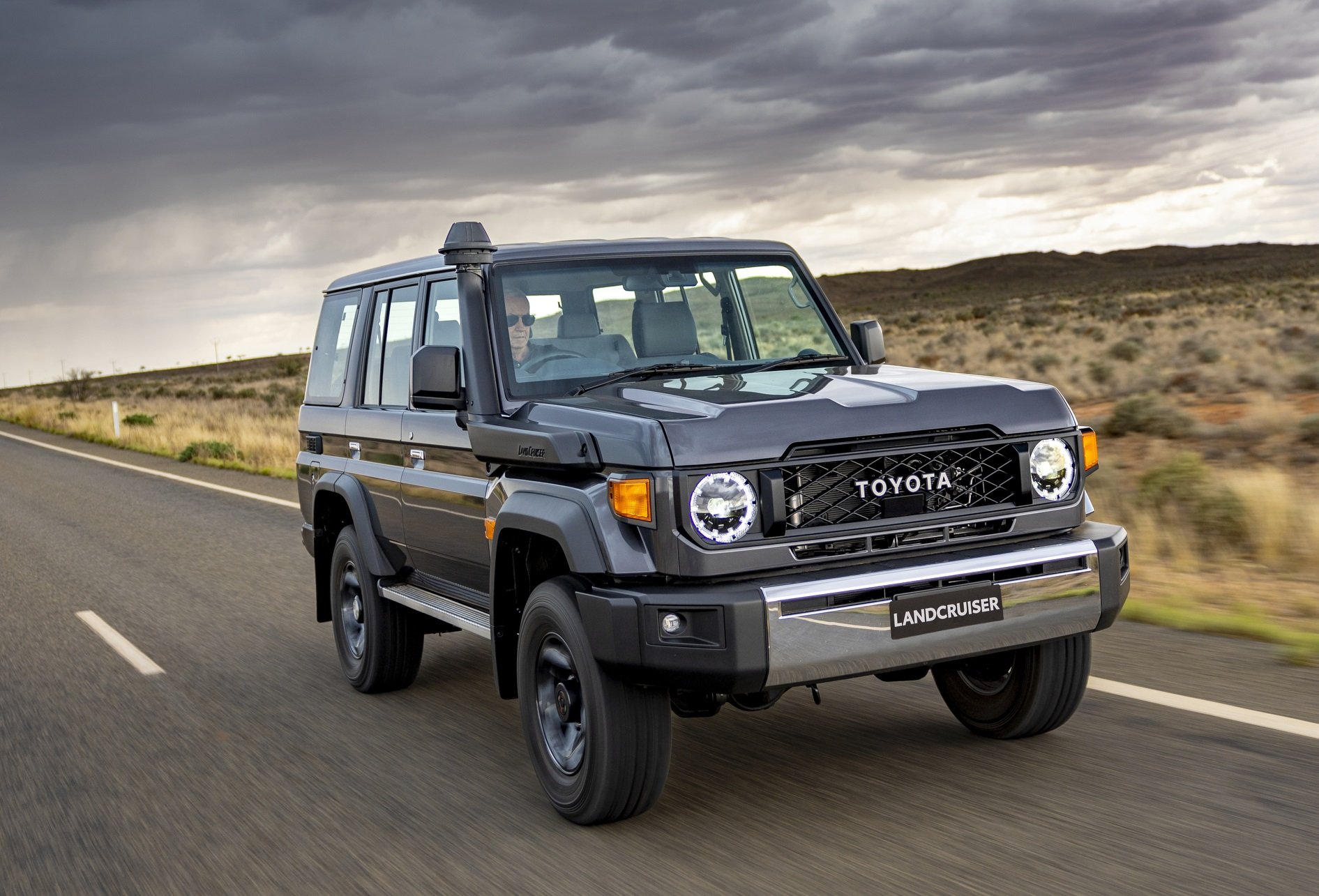

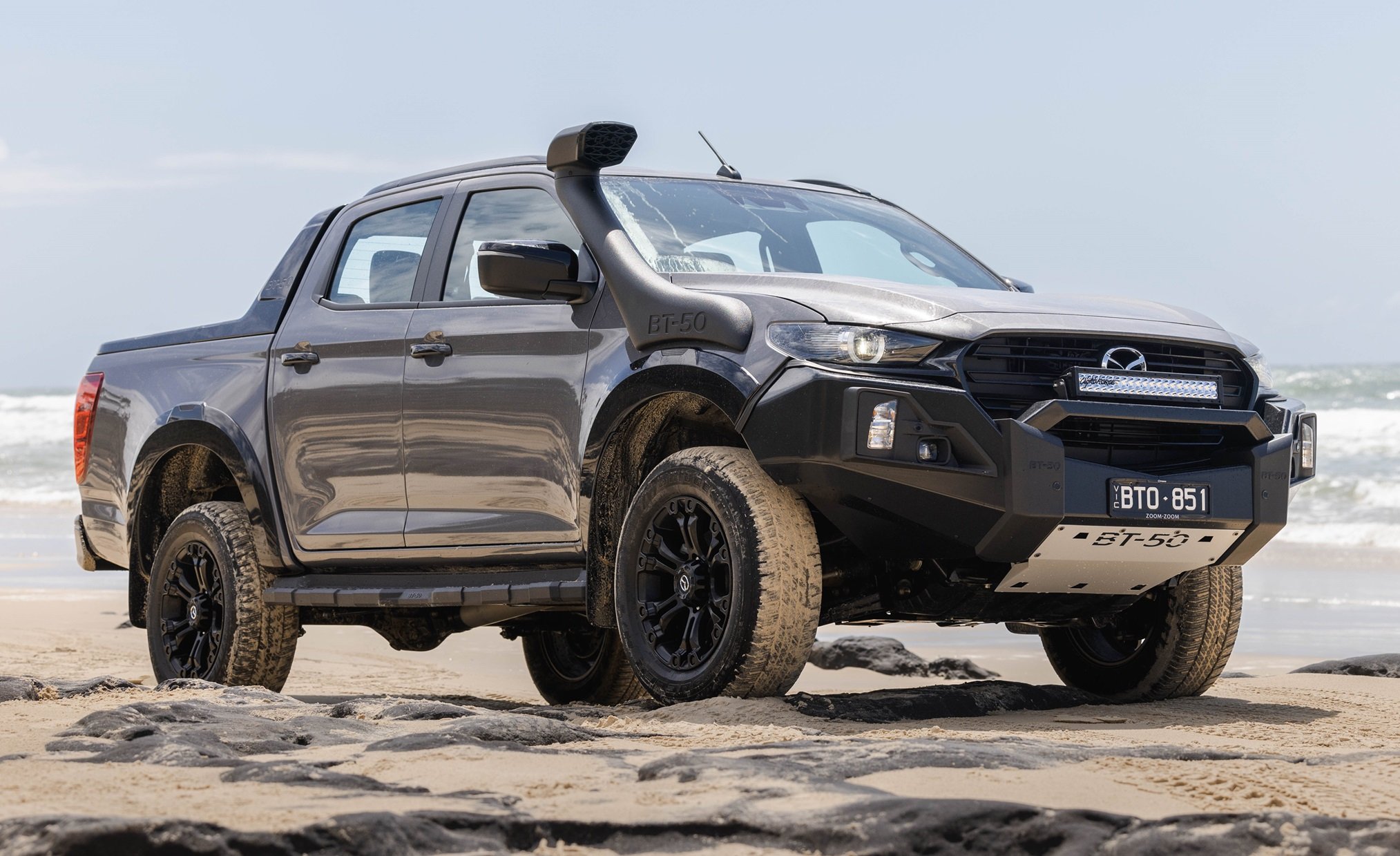
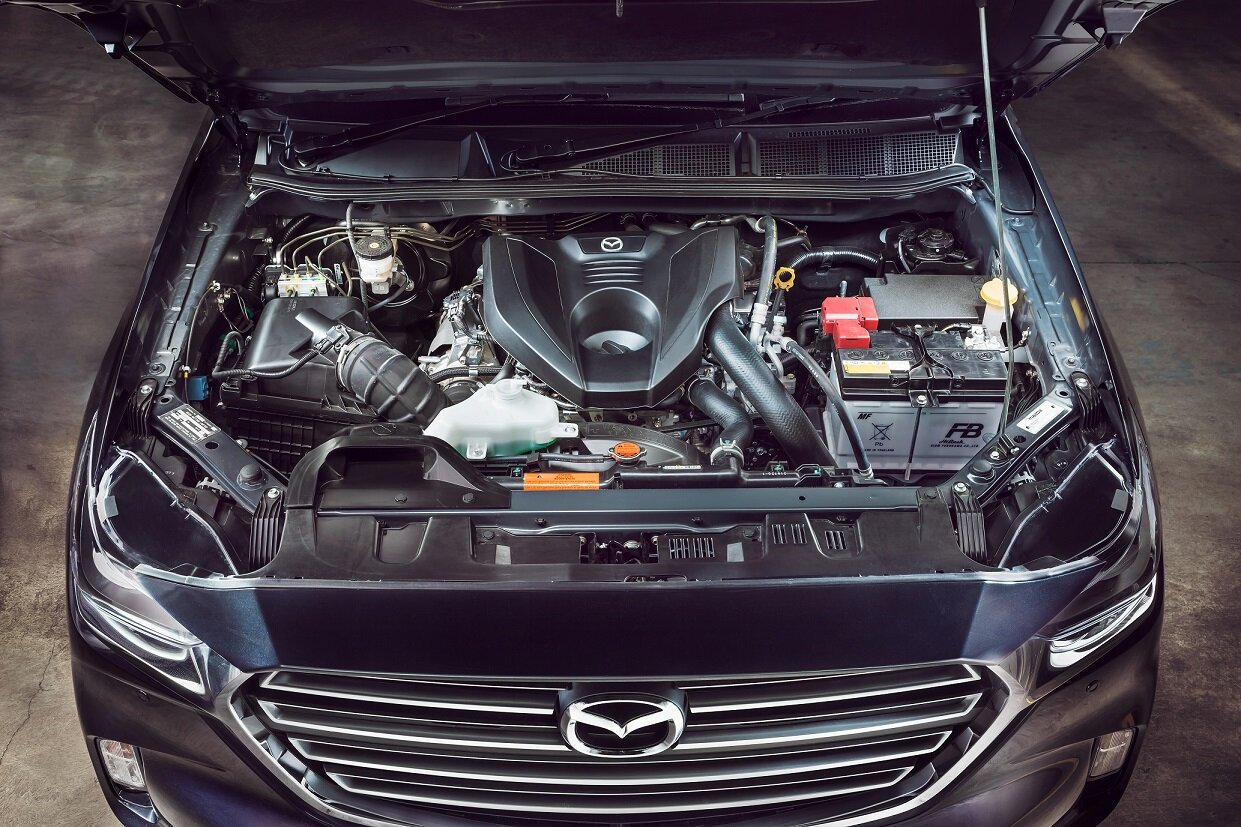
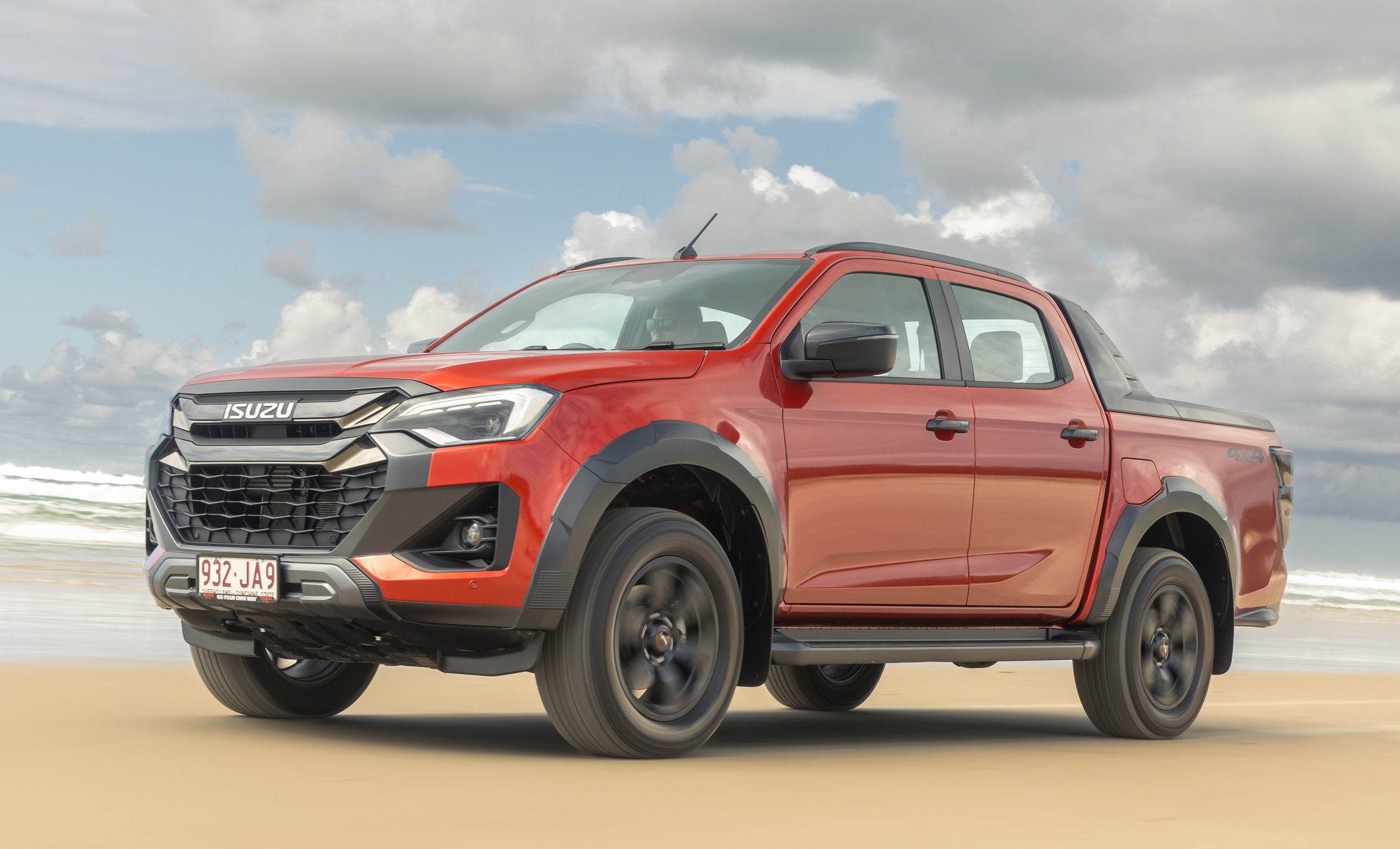















Toyota has raised the Corolla and called it a small SUV, one that offers reliability, practicality and even performance atop the range. Let’s see if there are any redeeming features that can justify the $50K price?